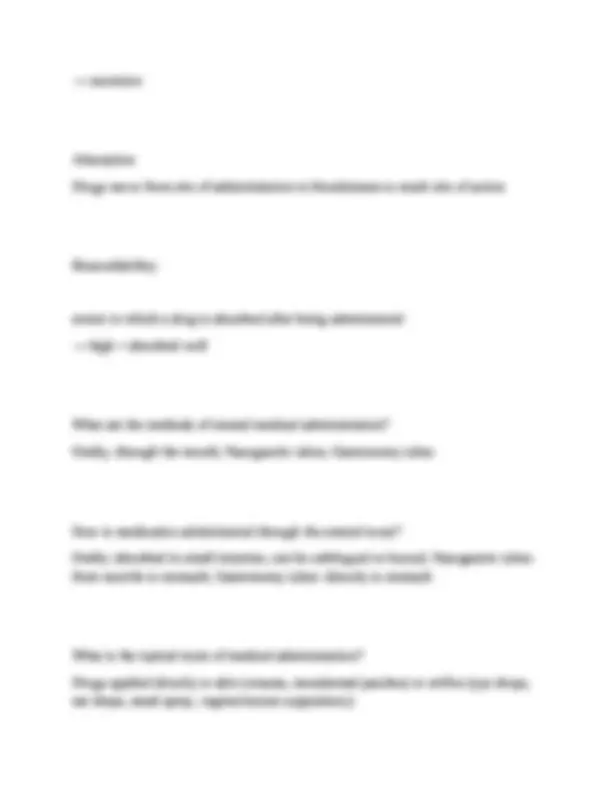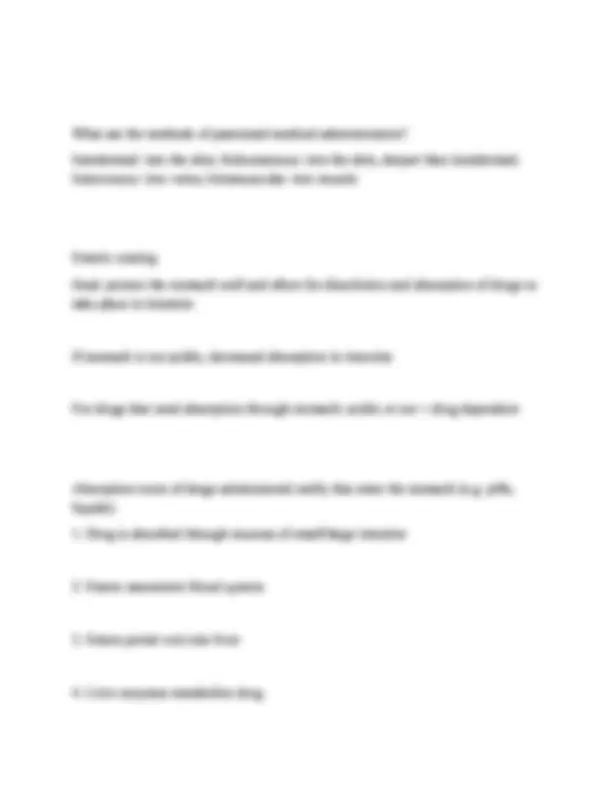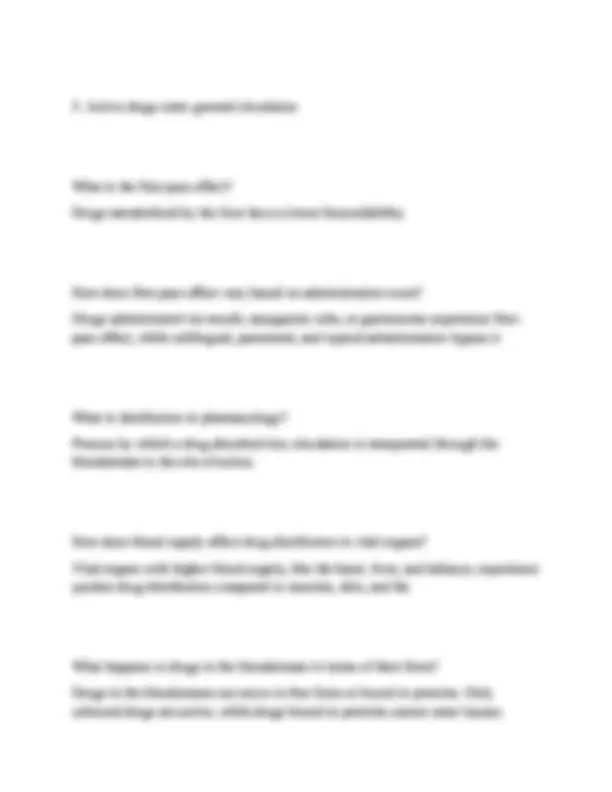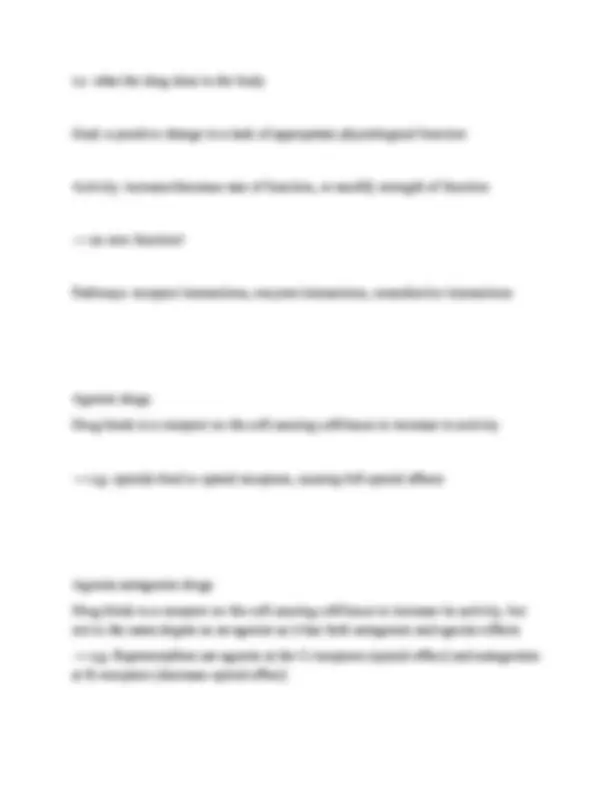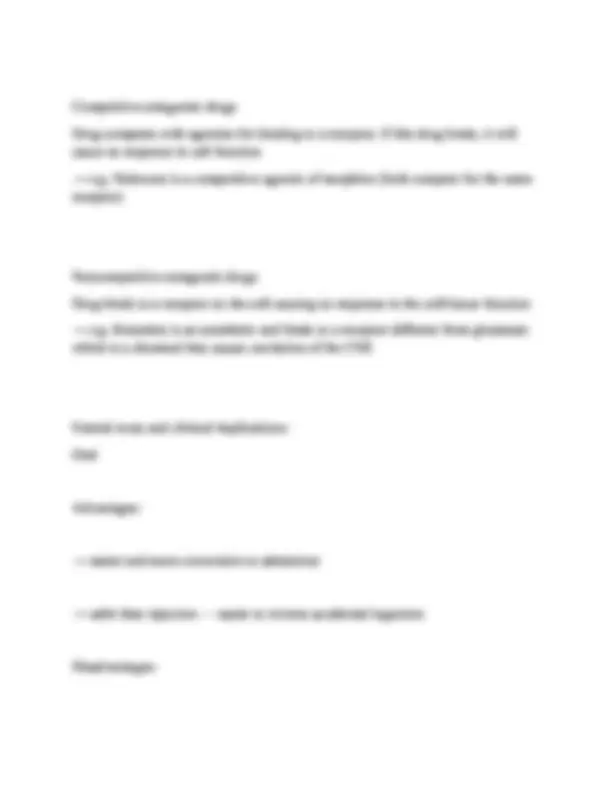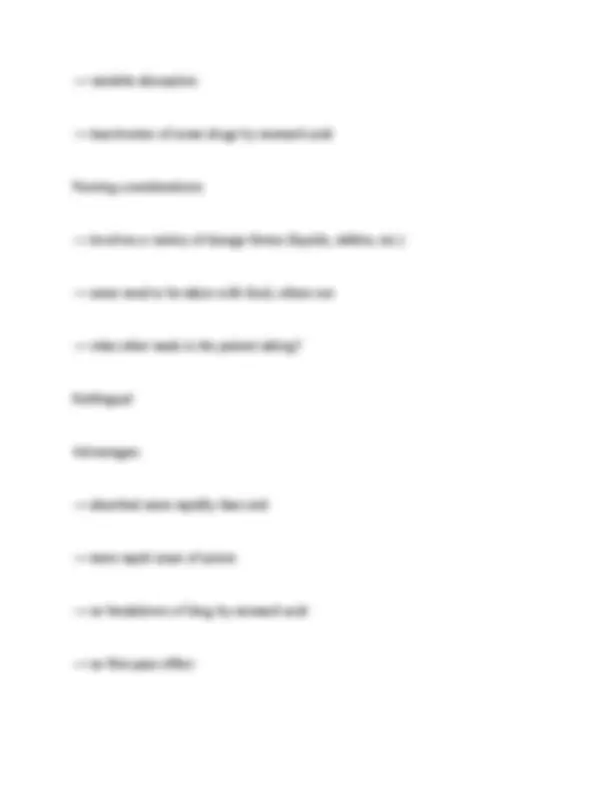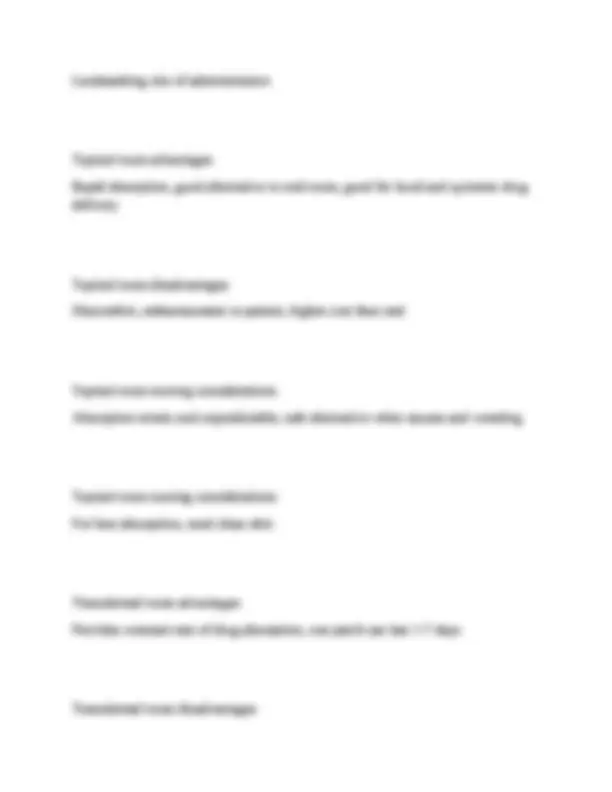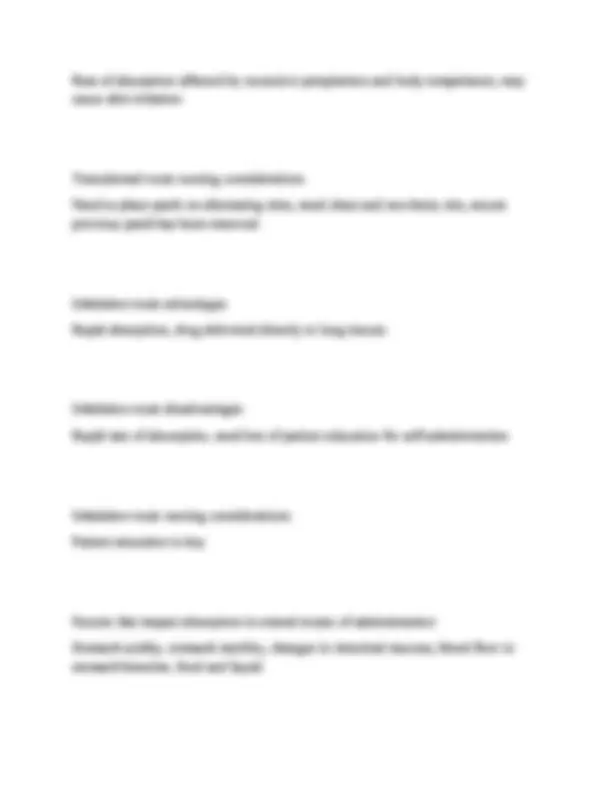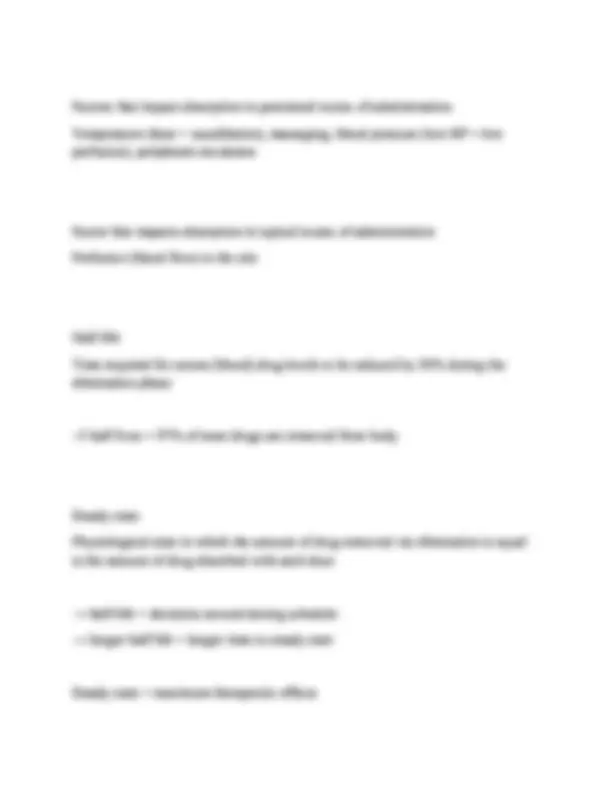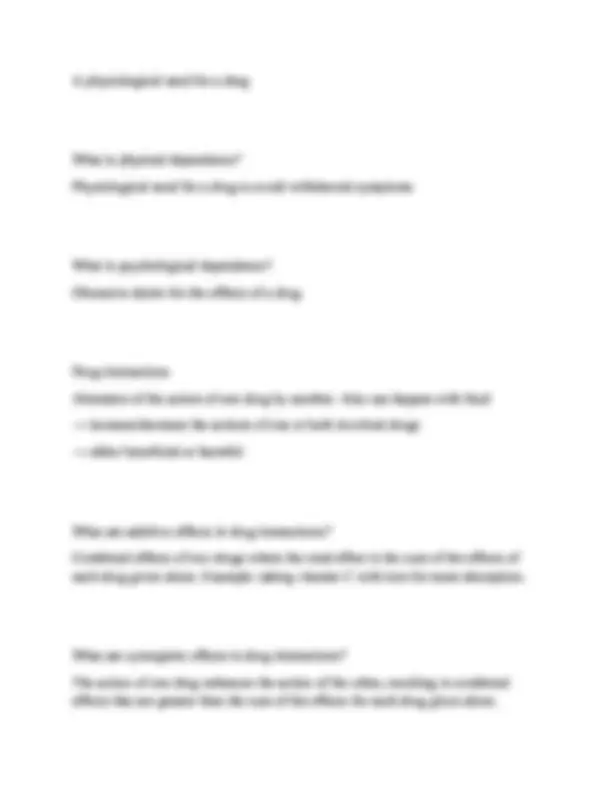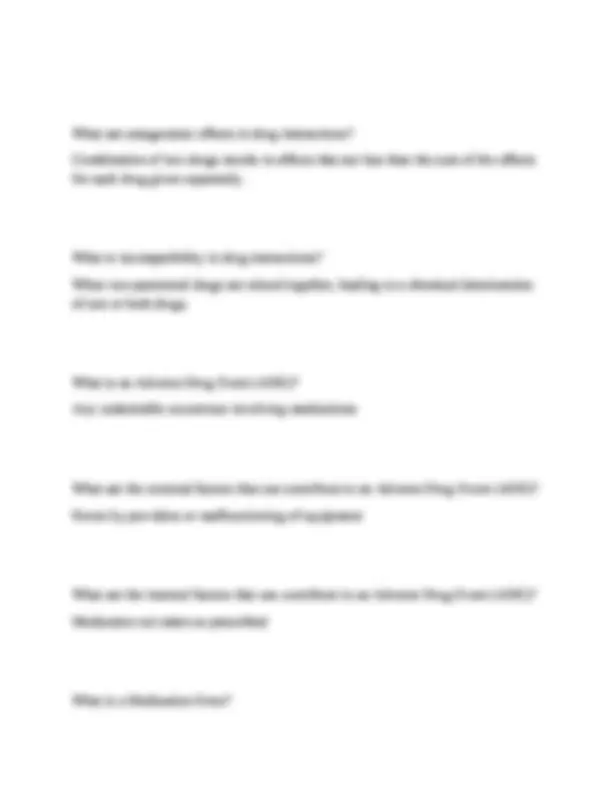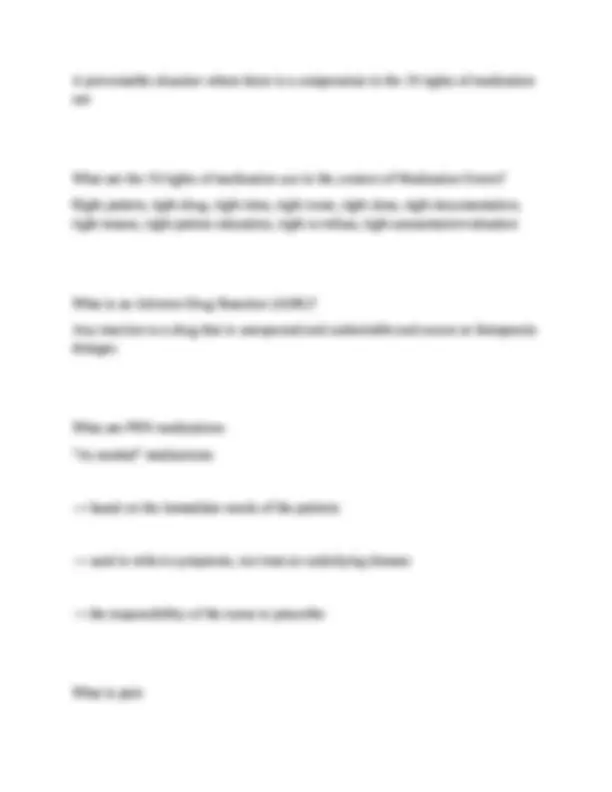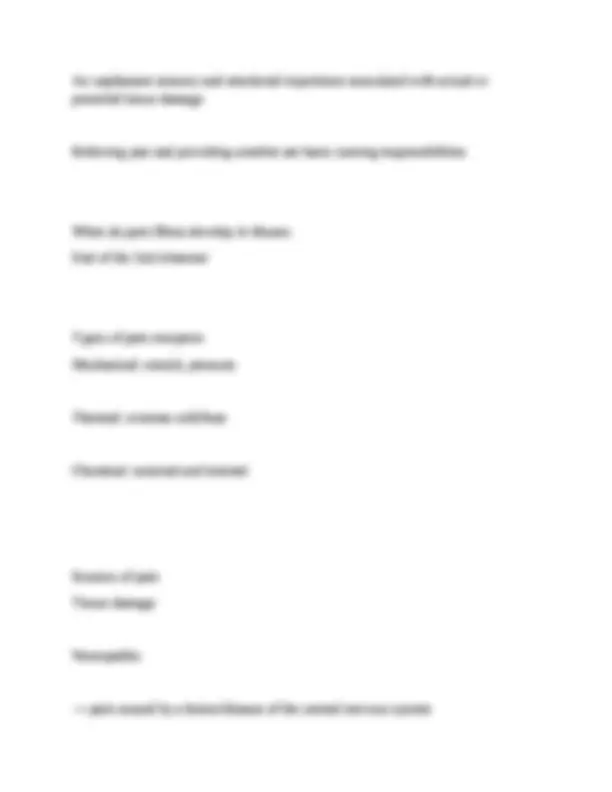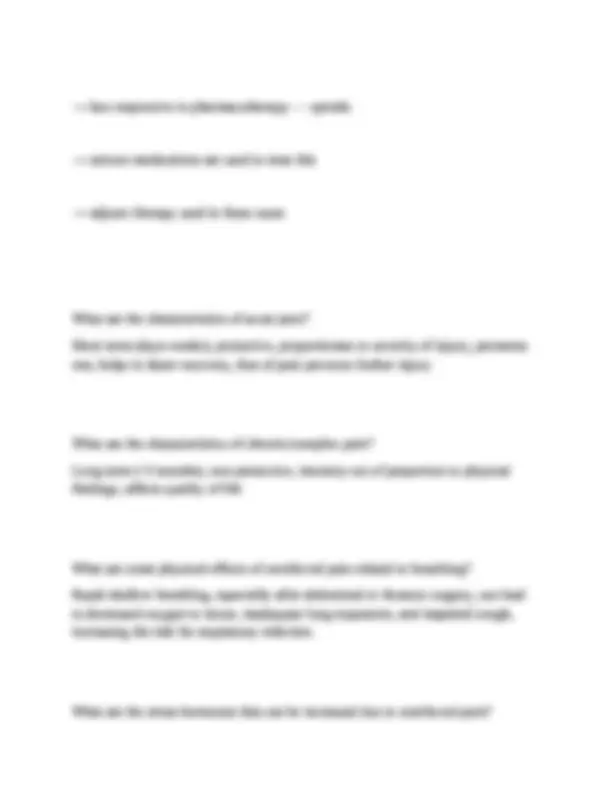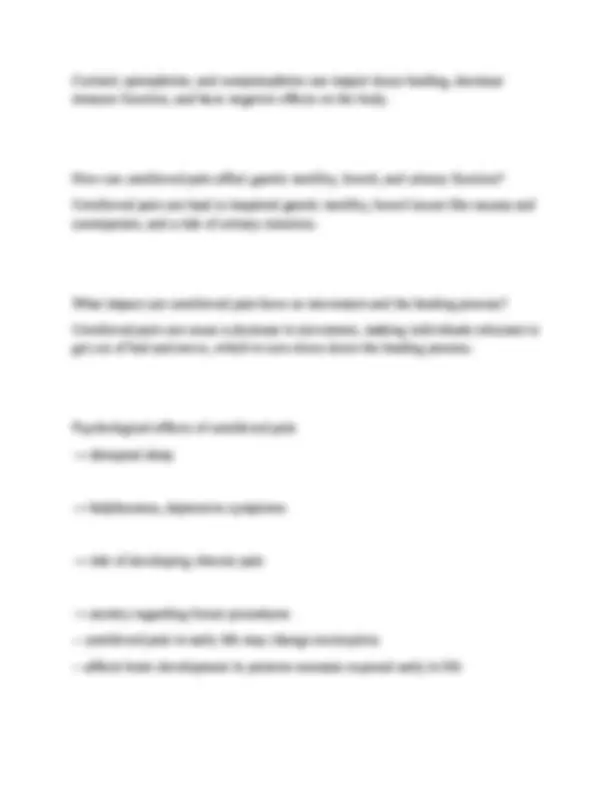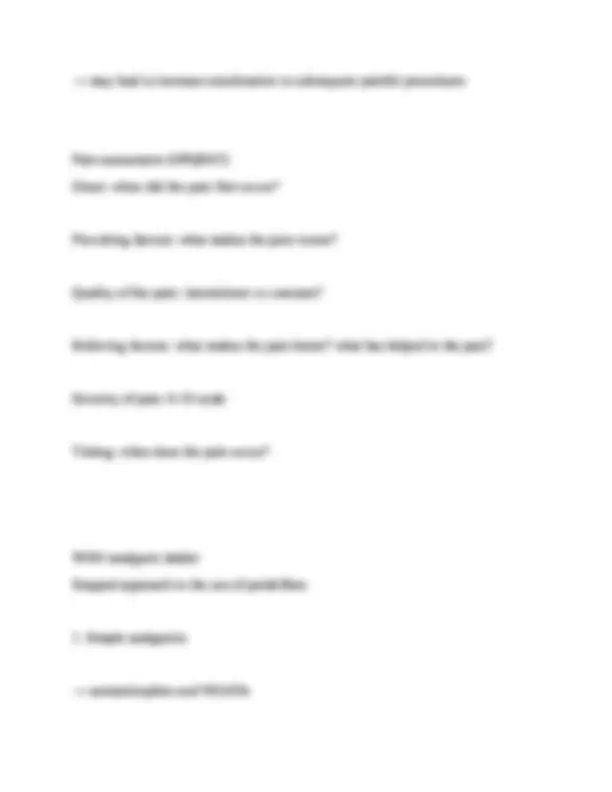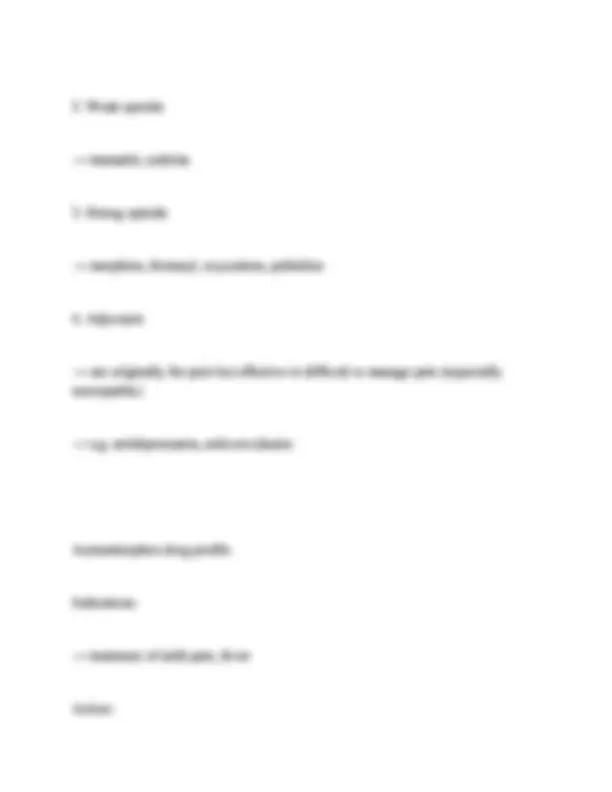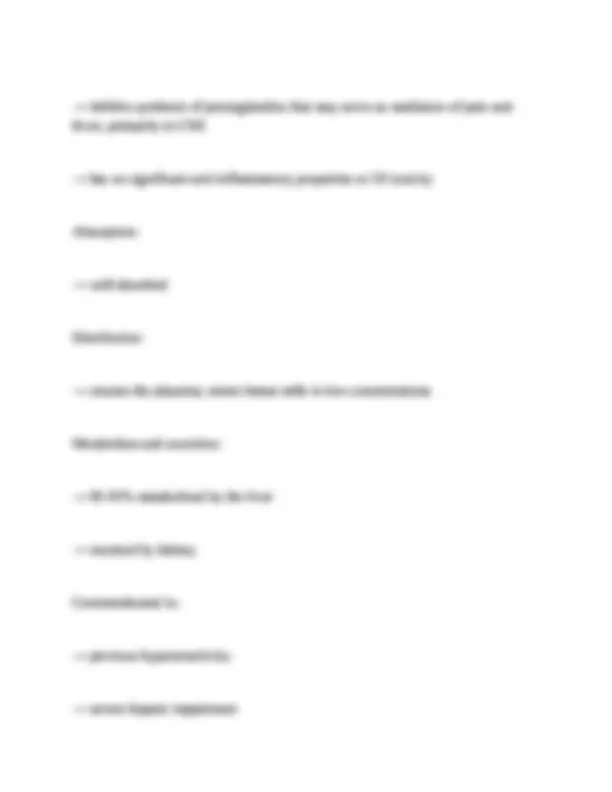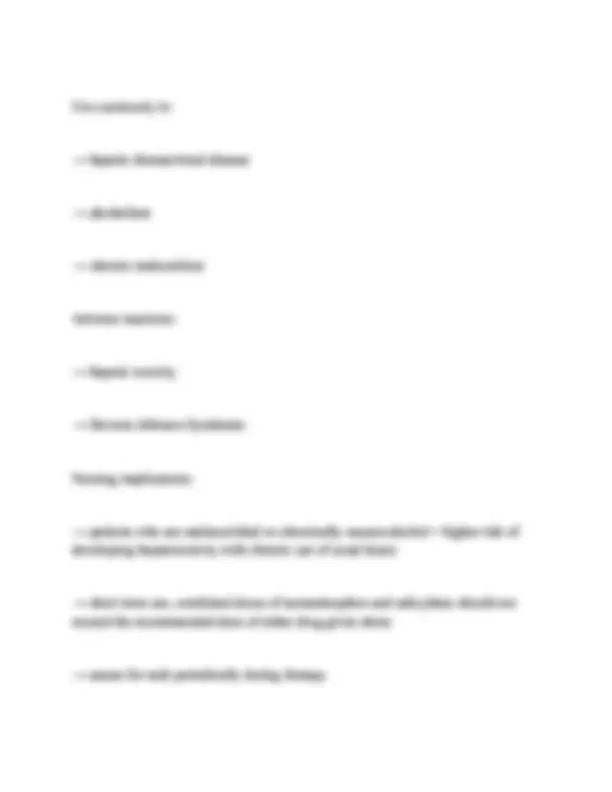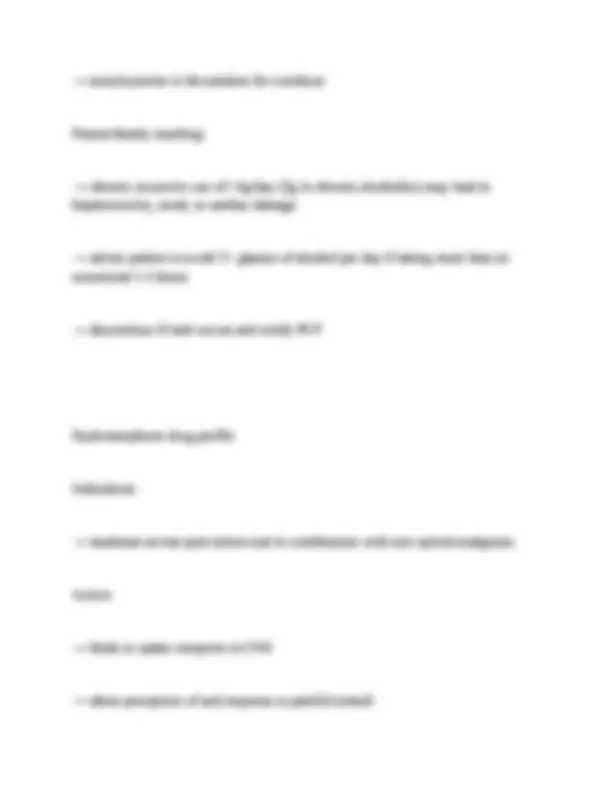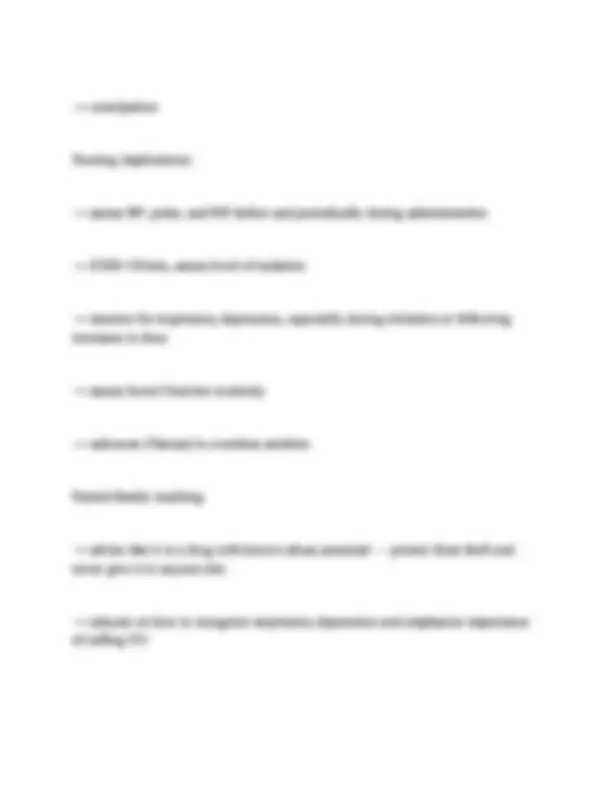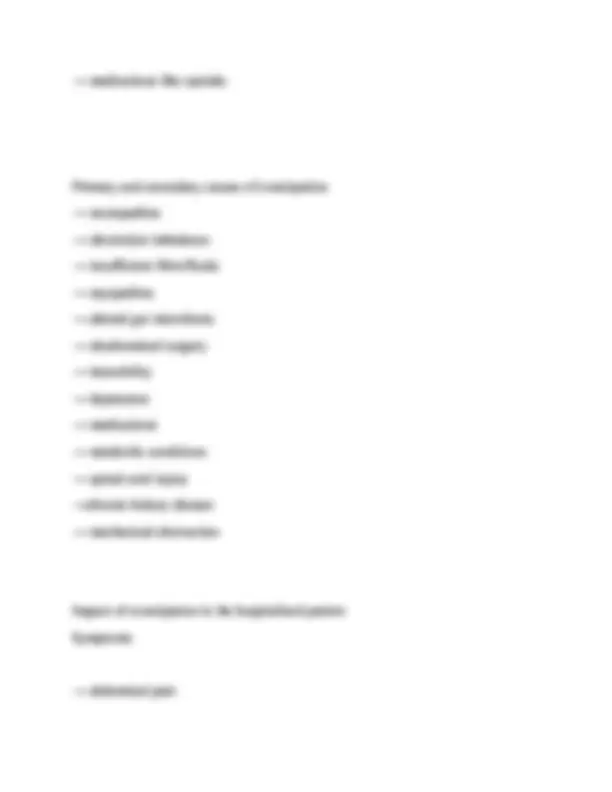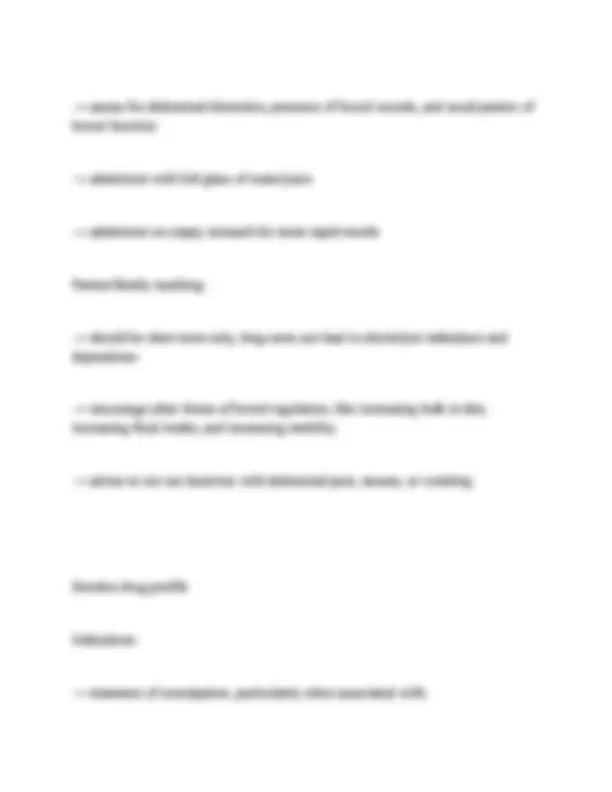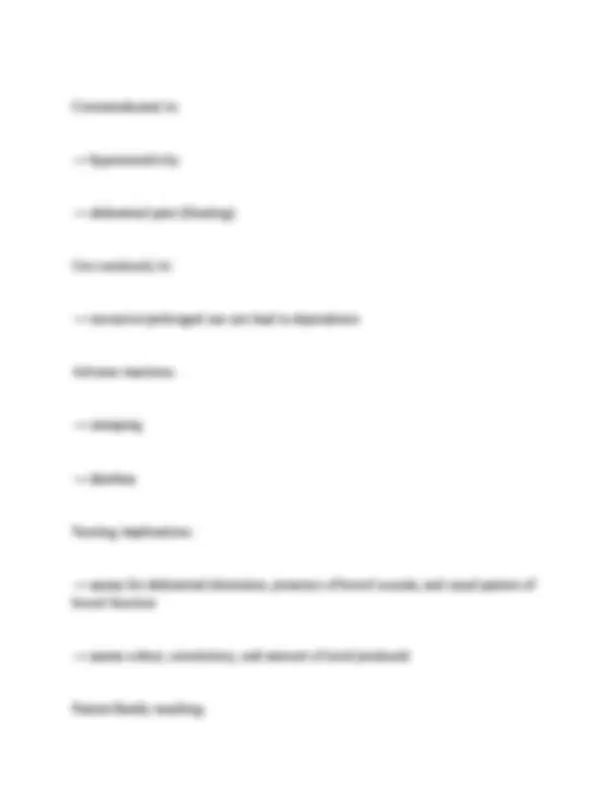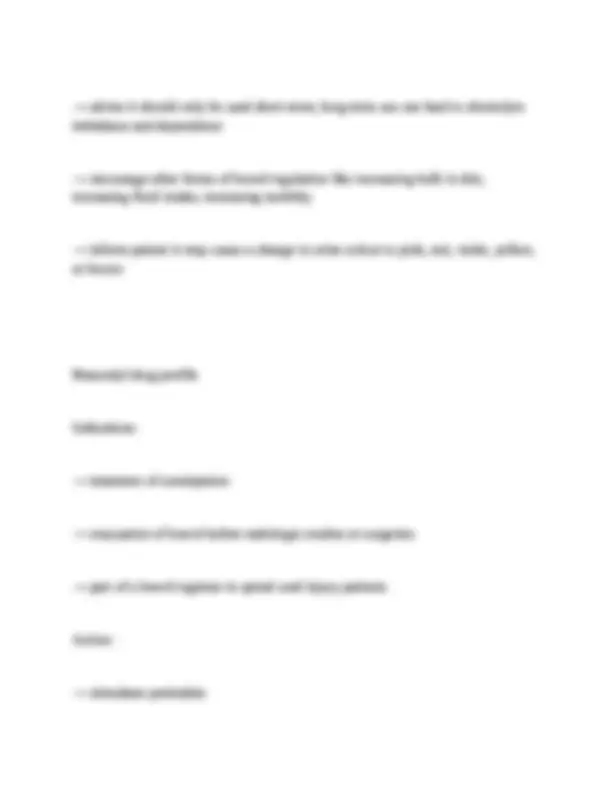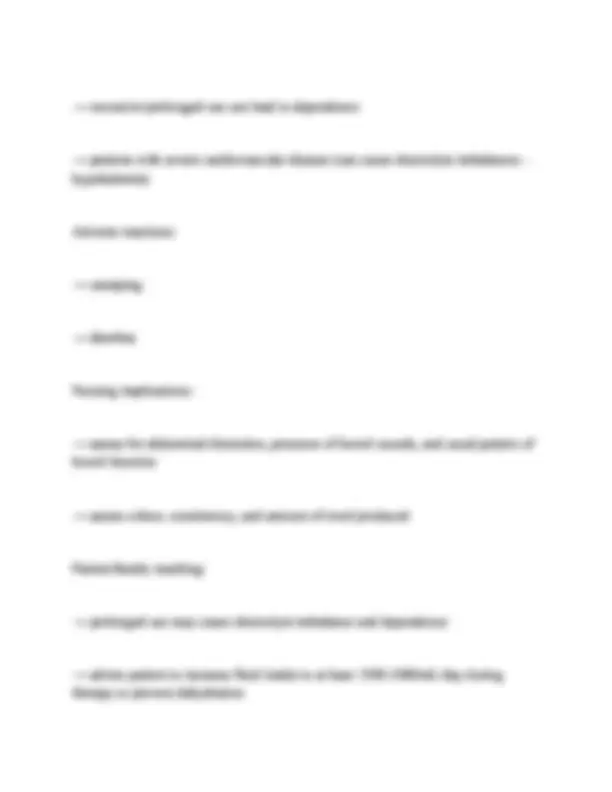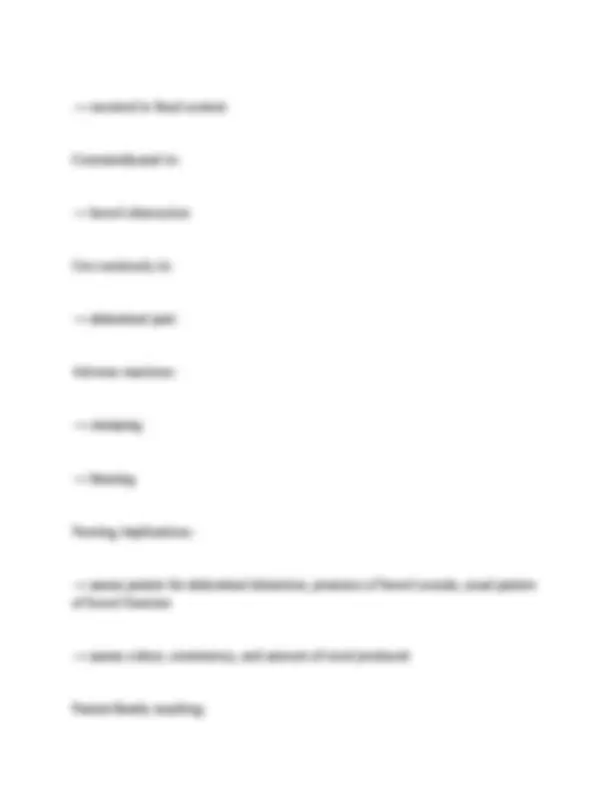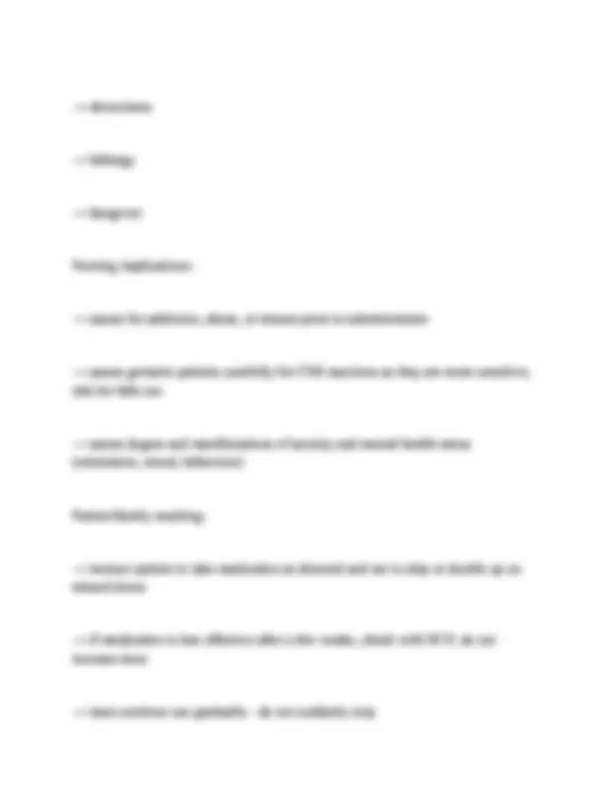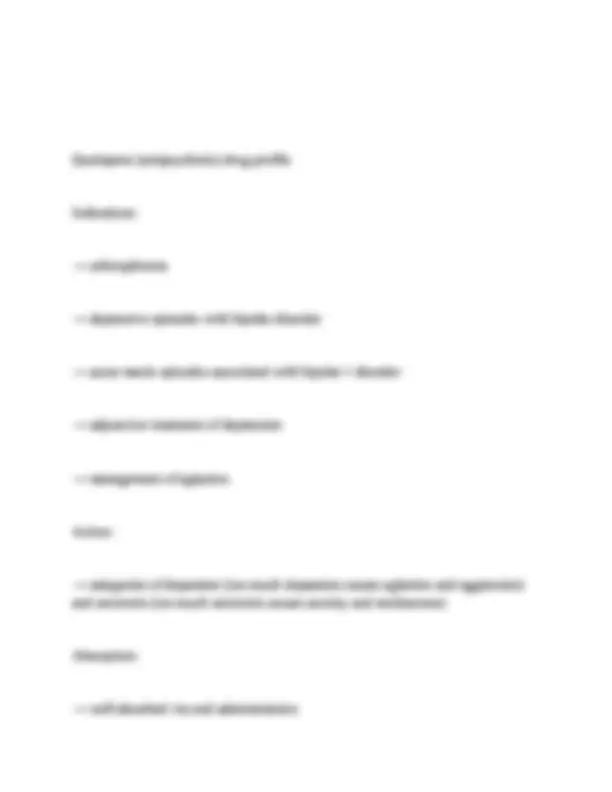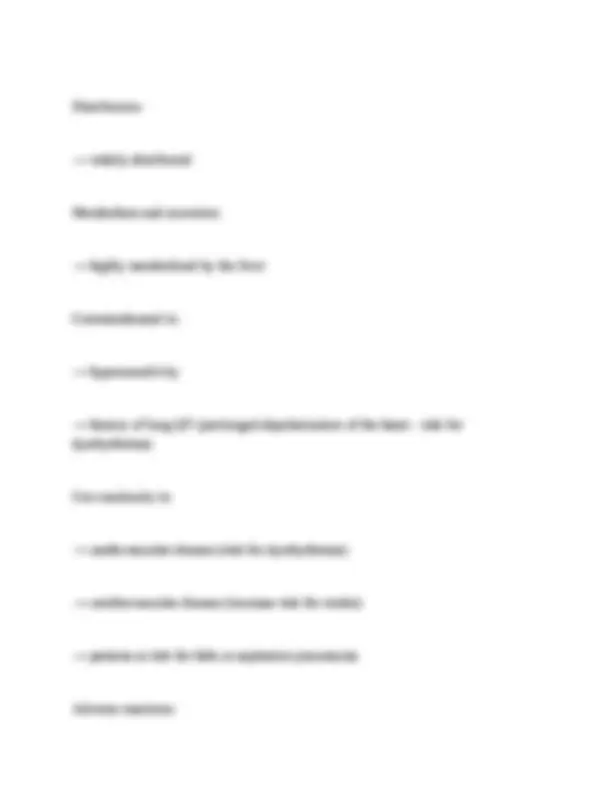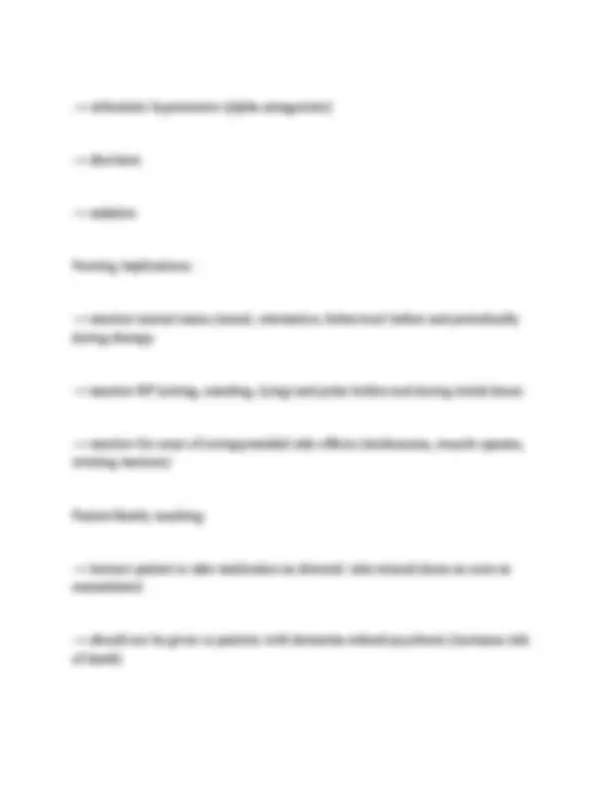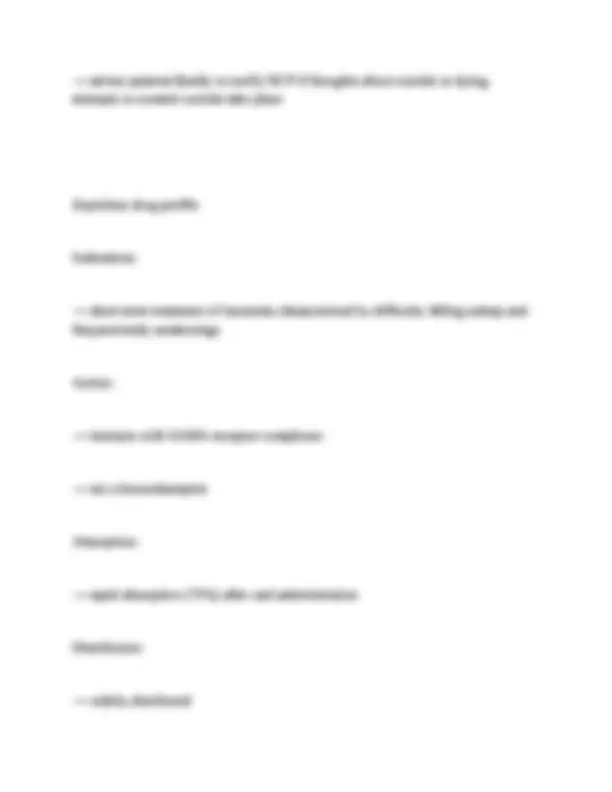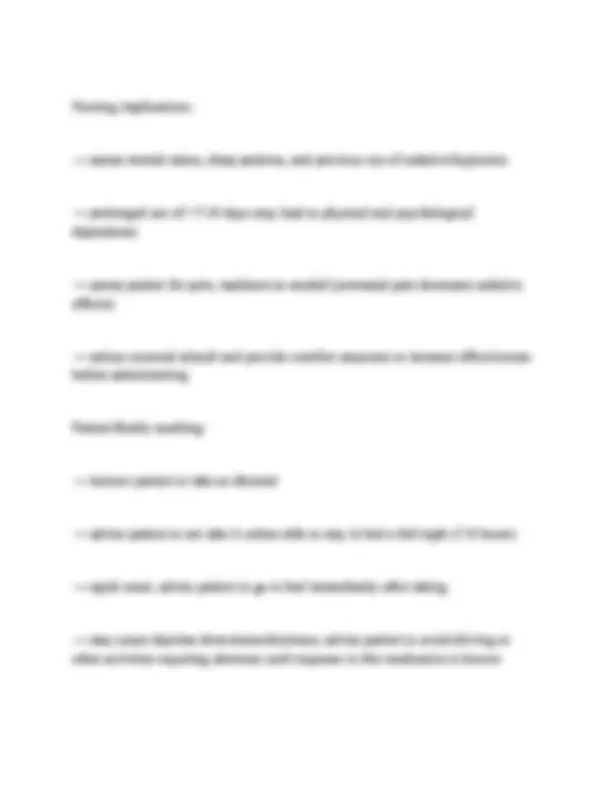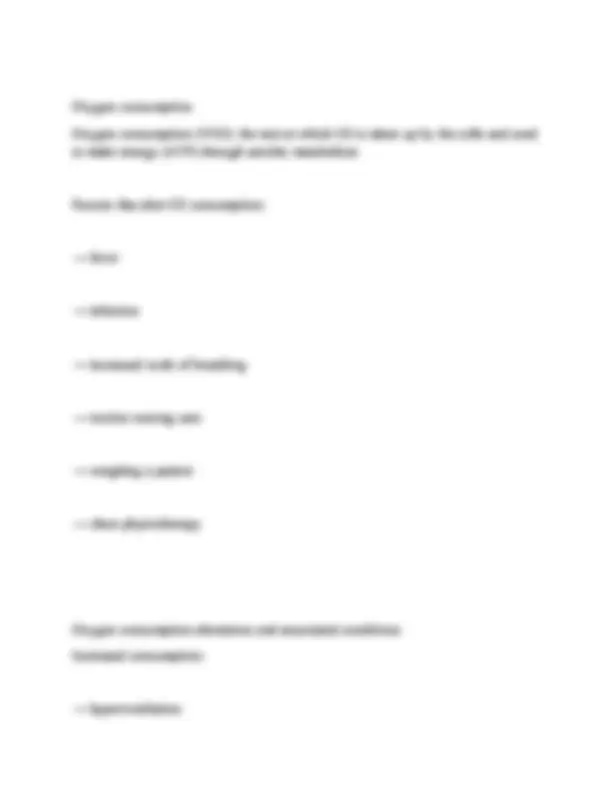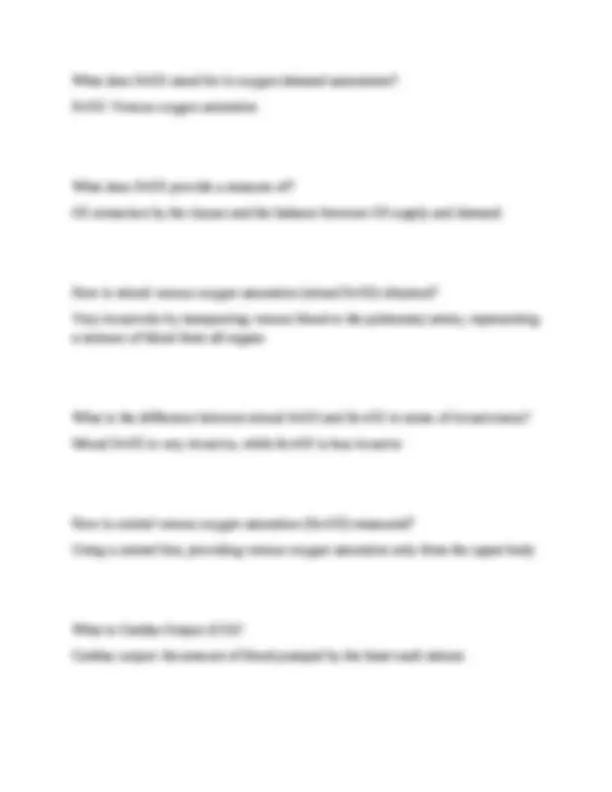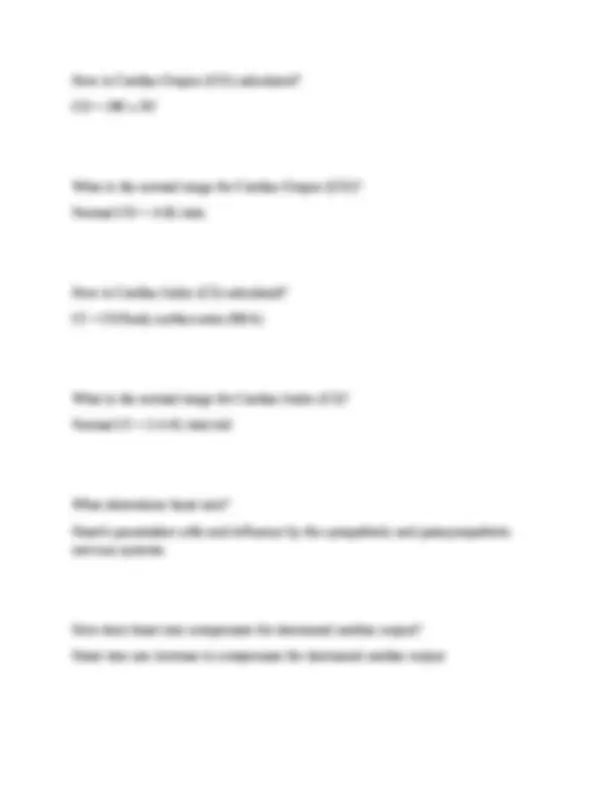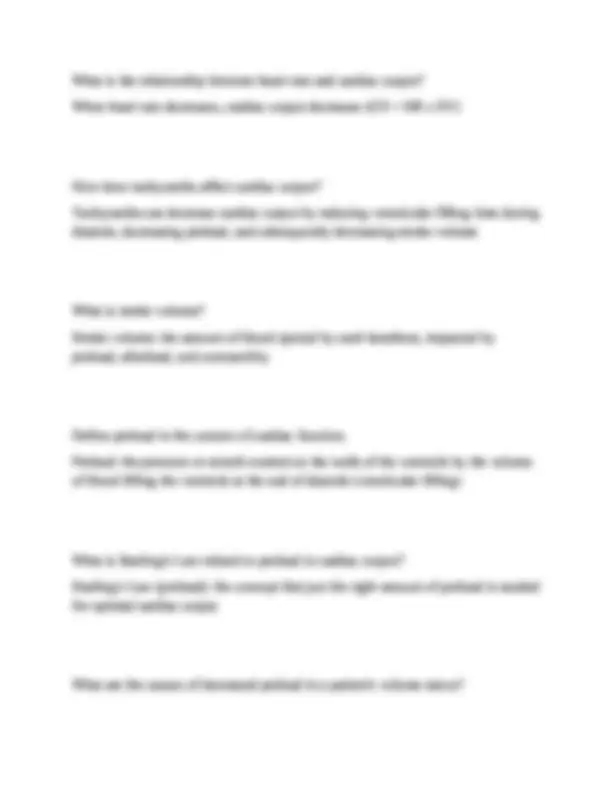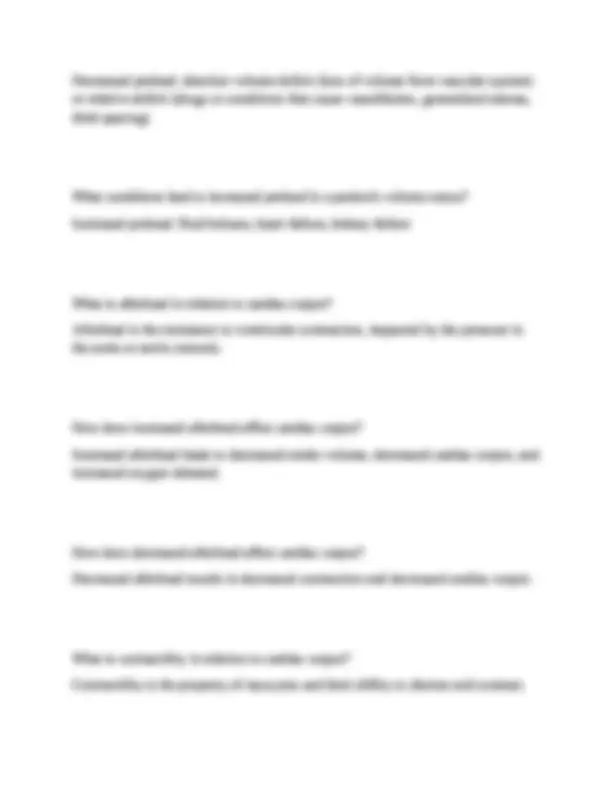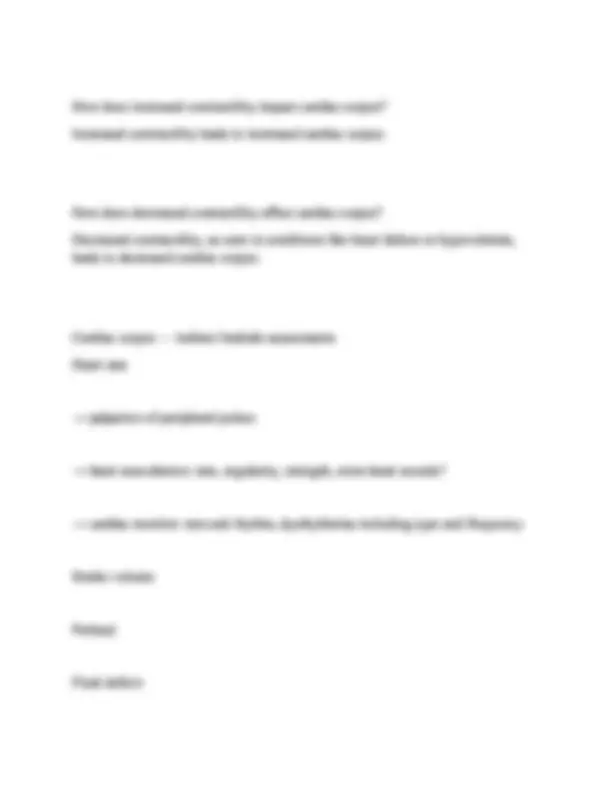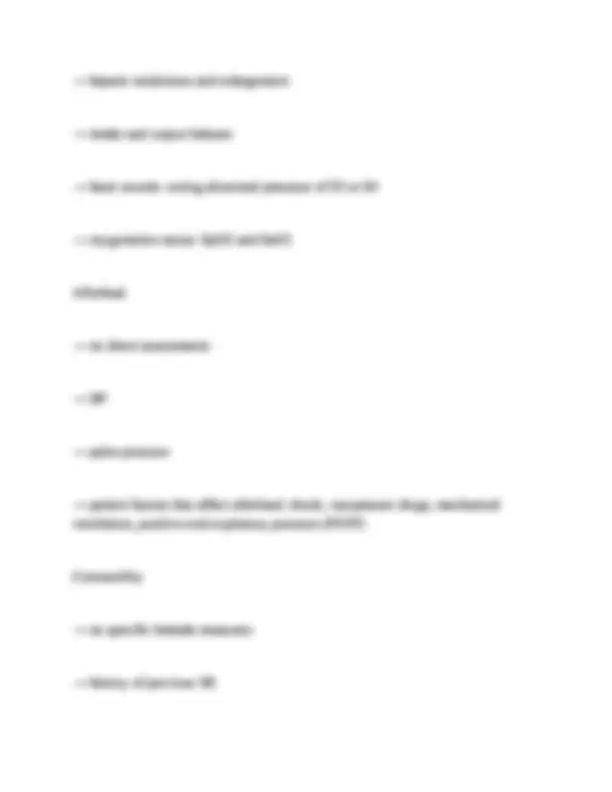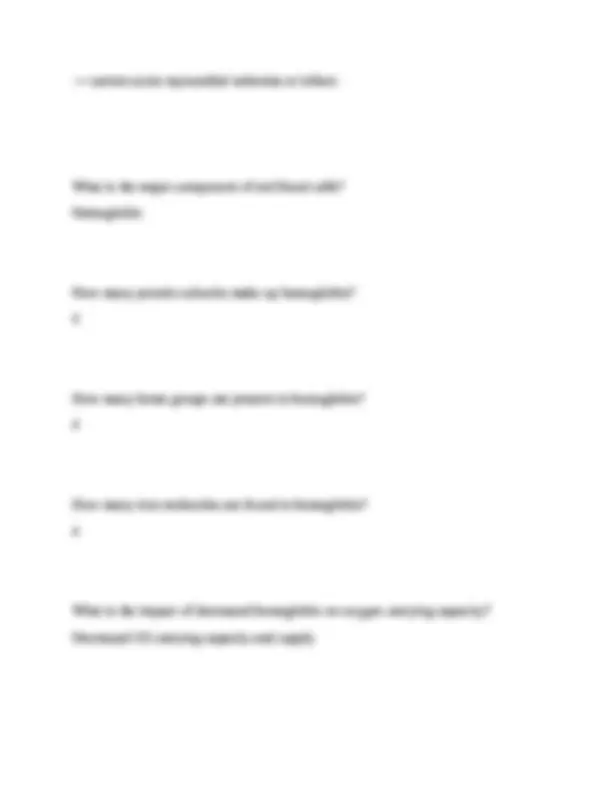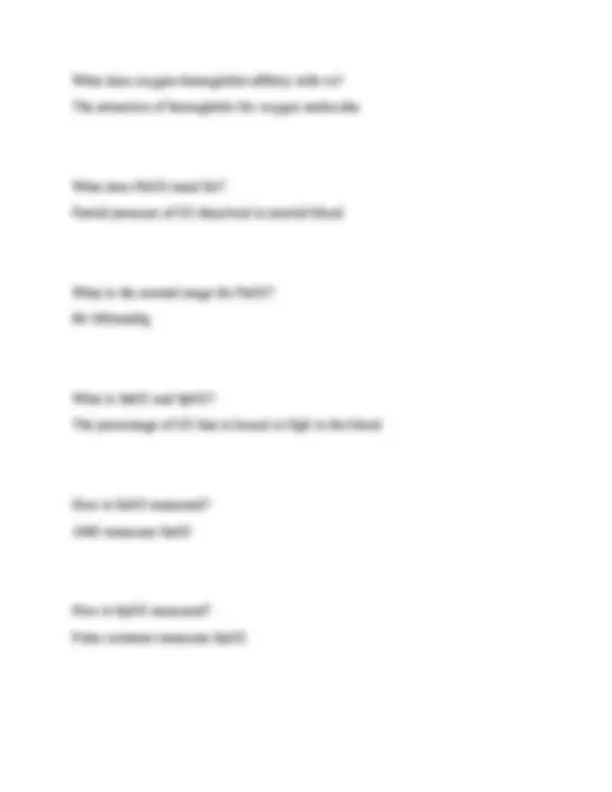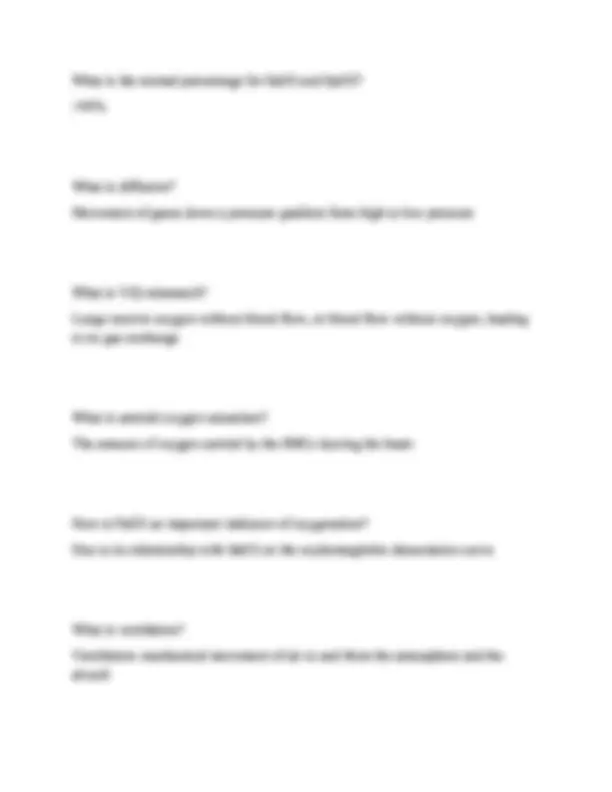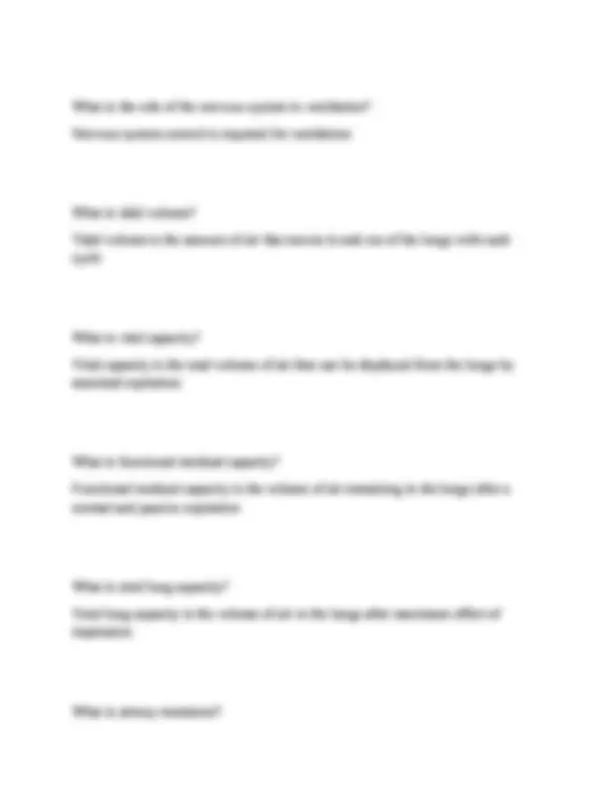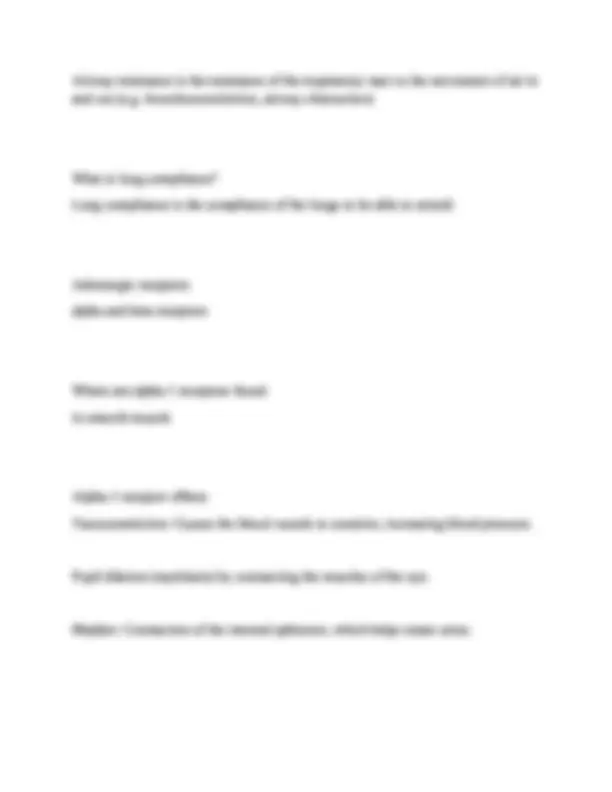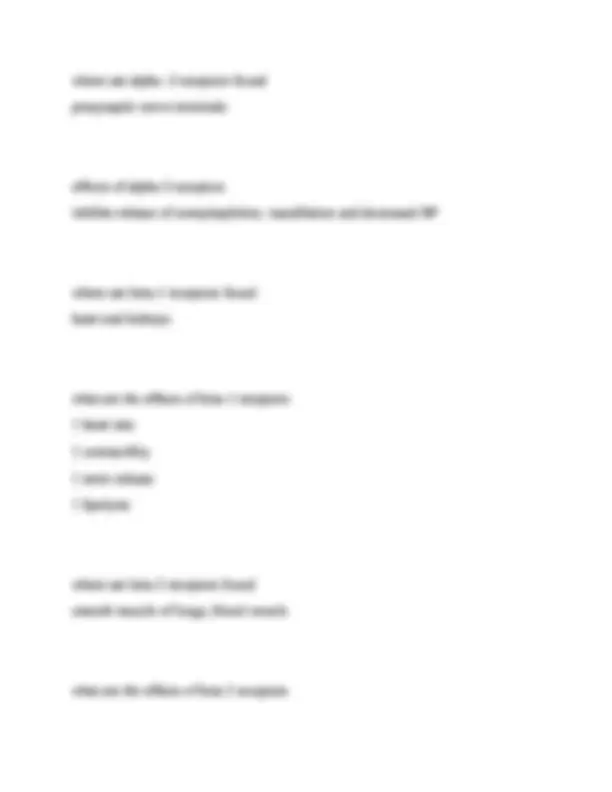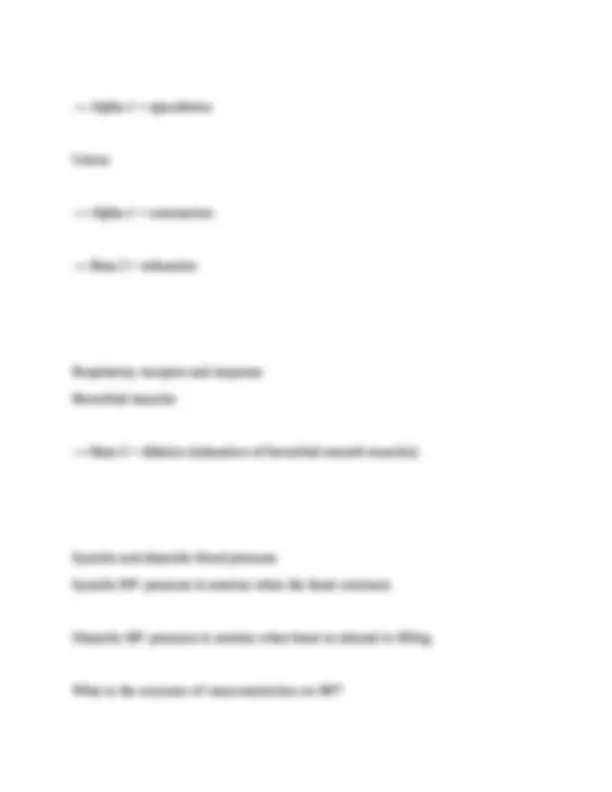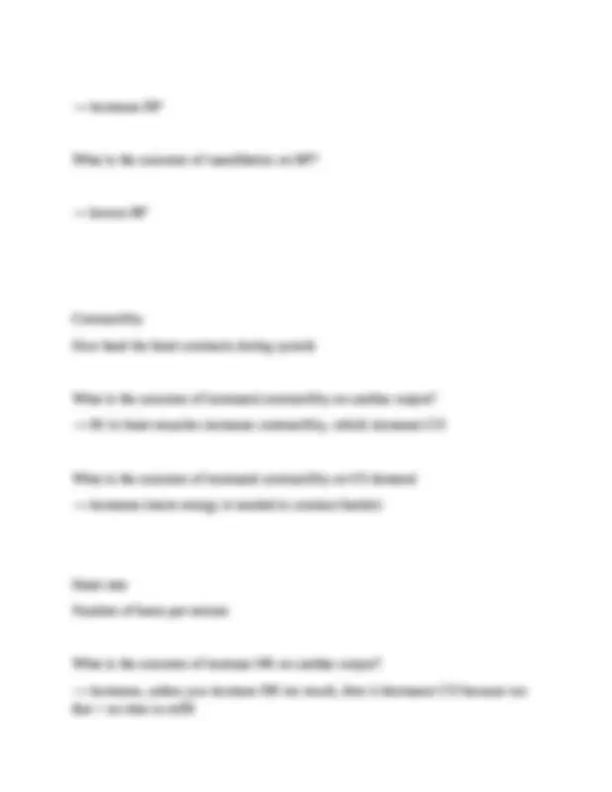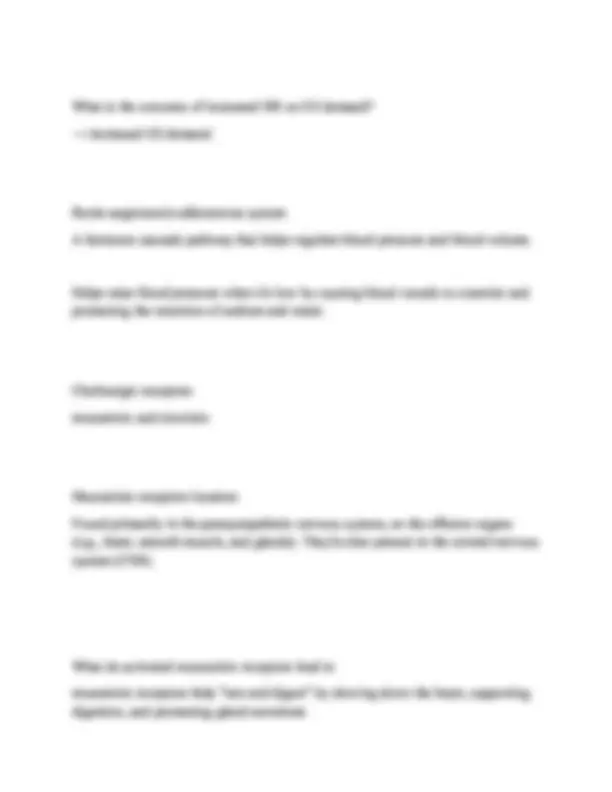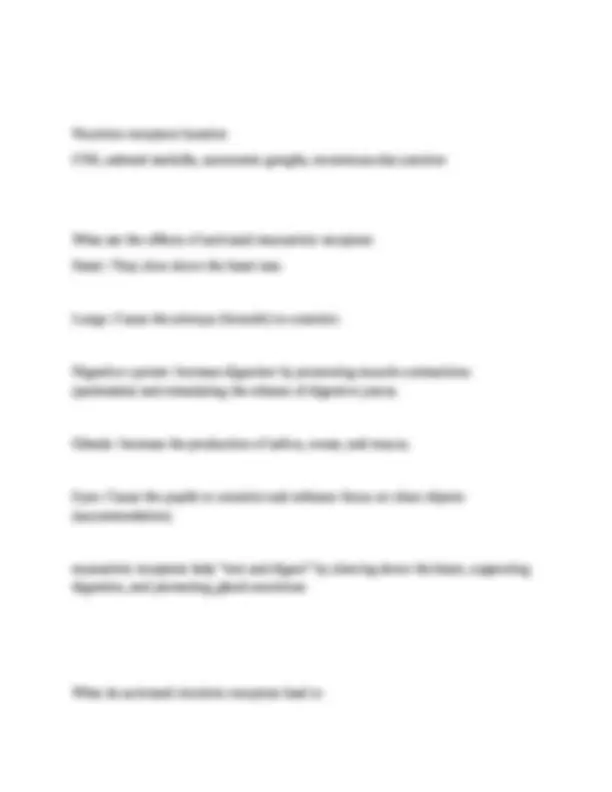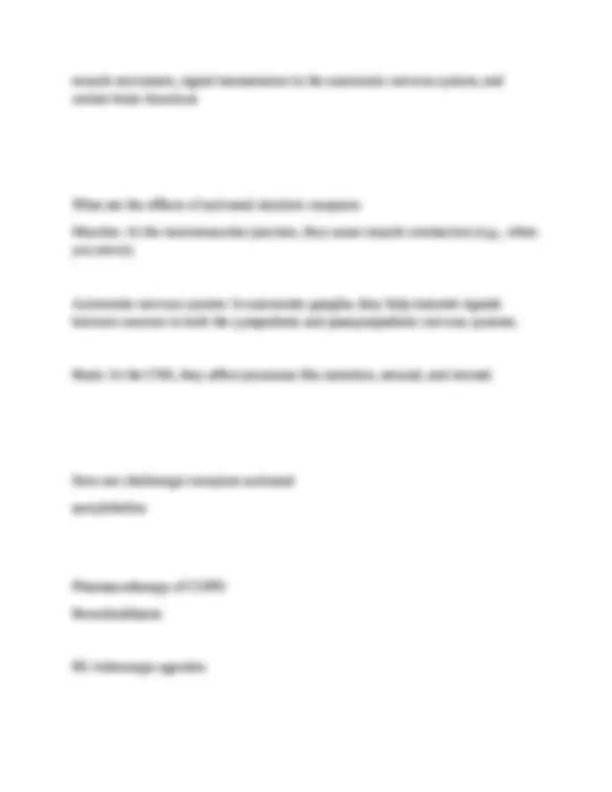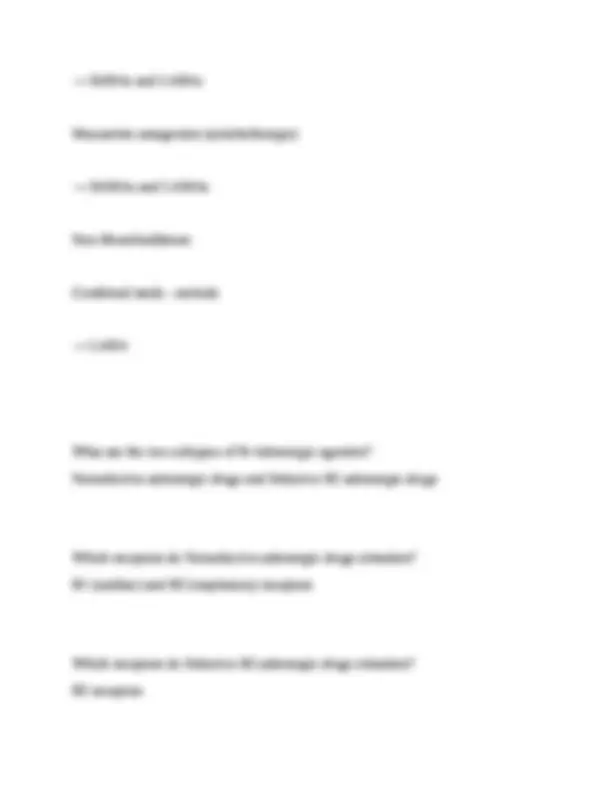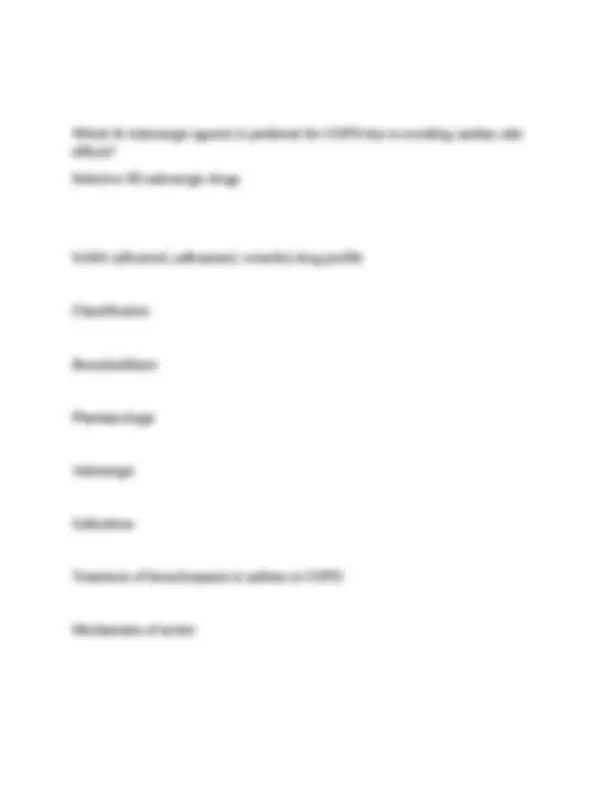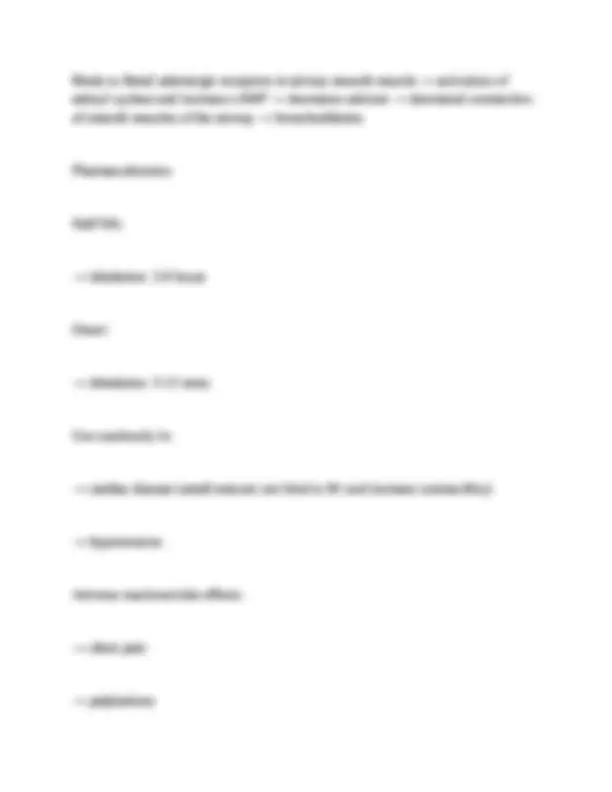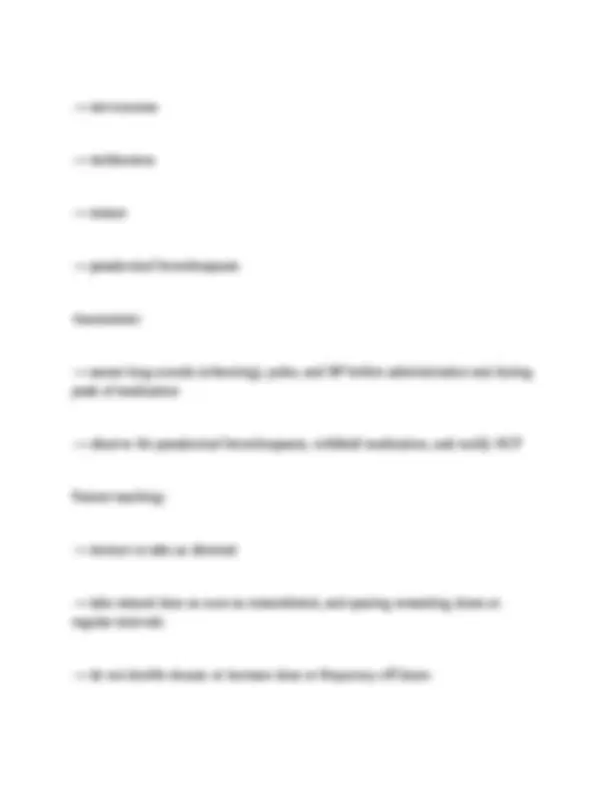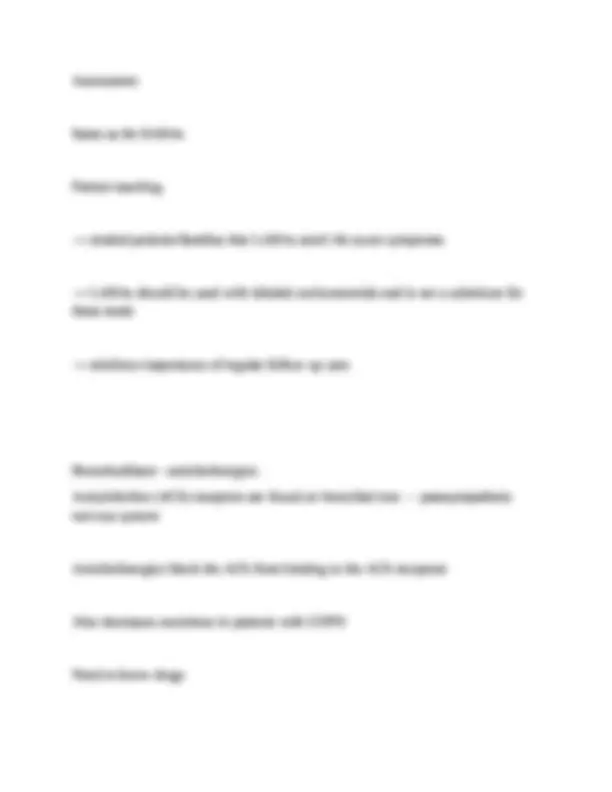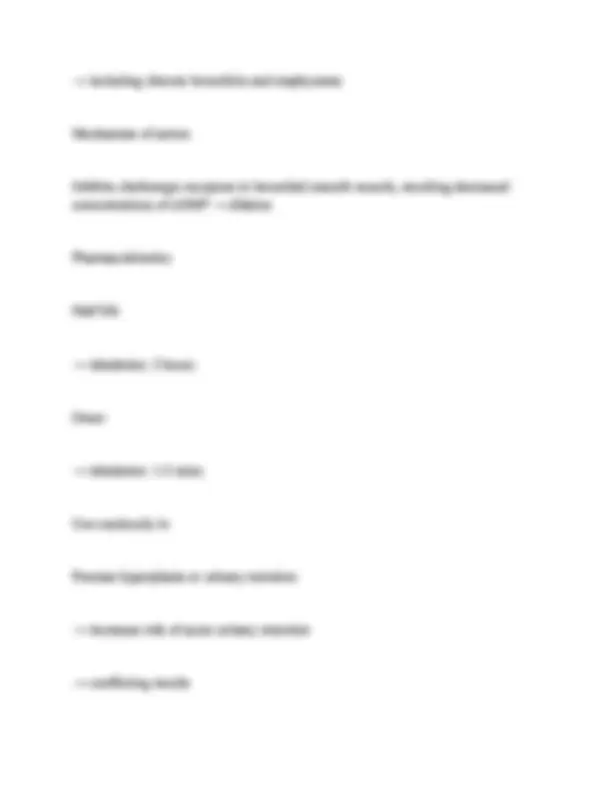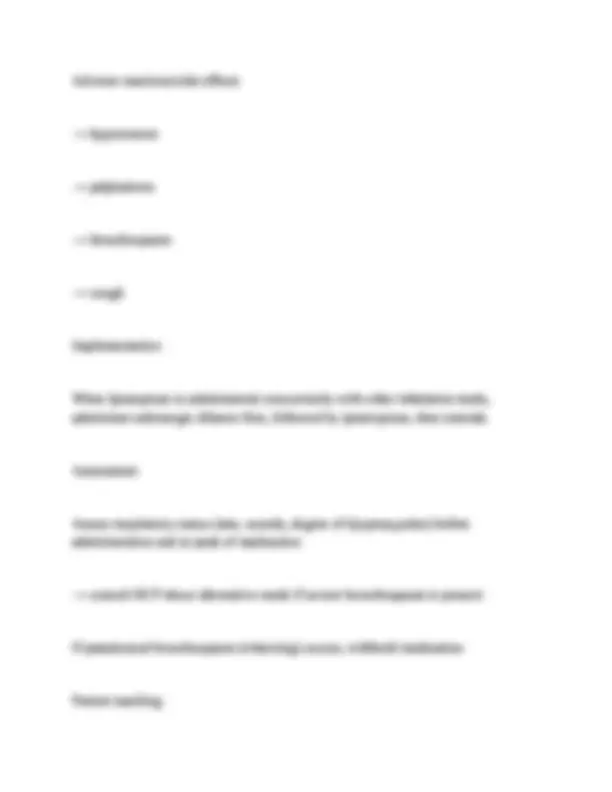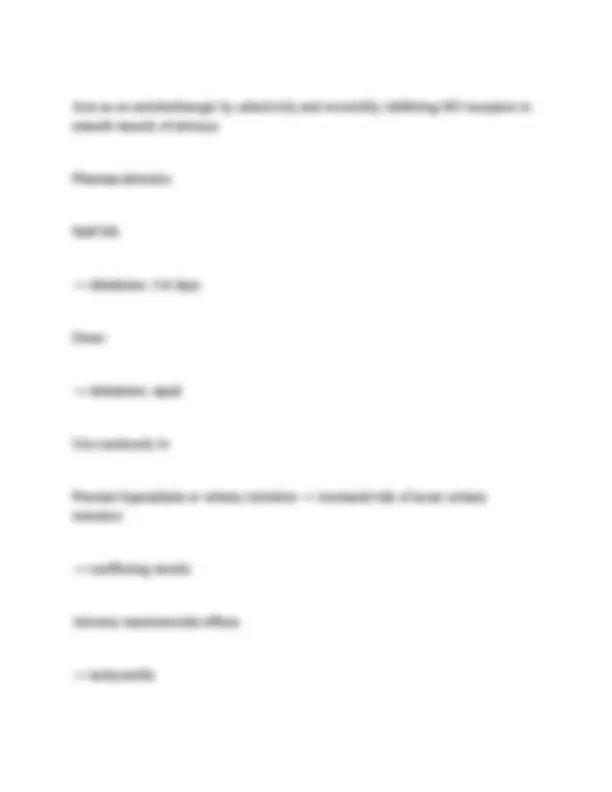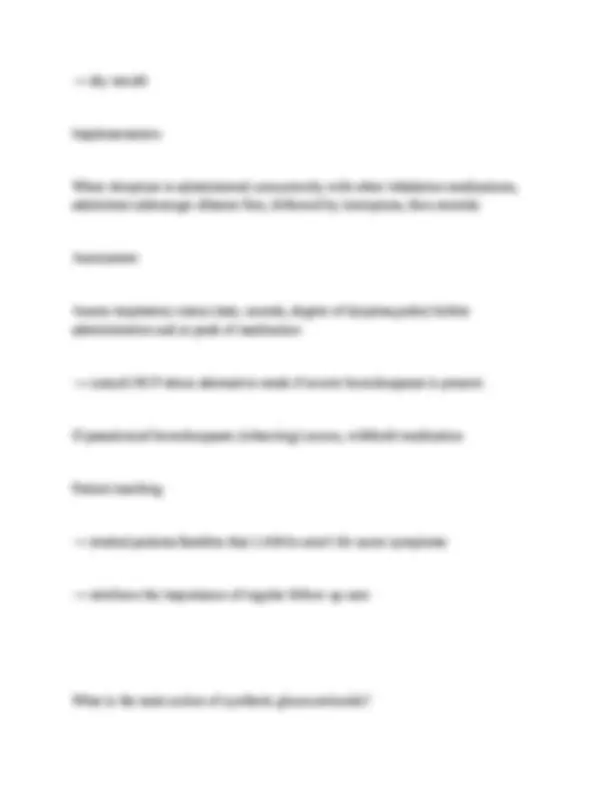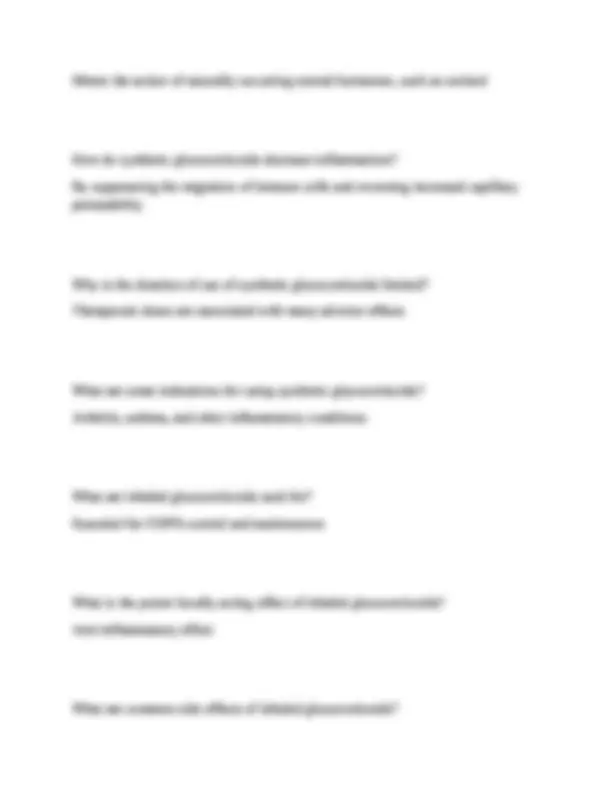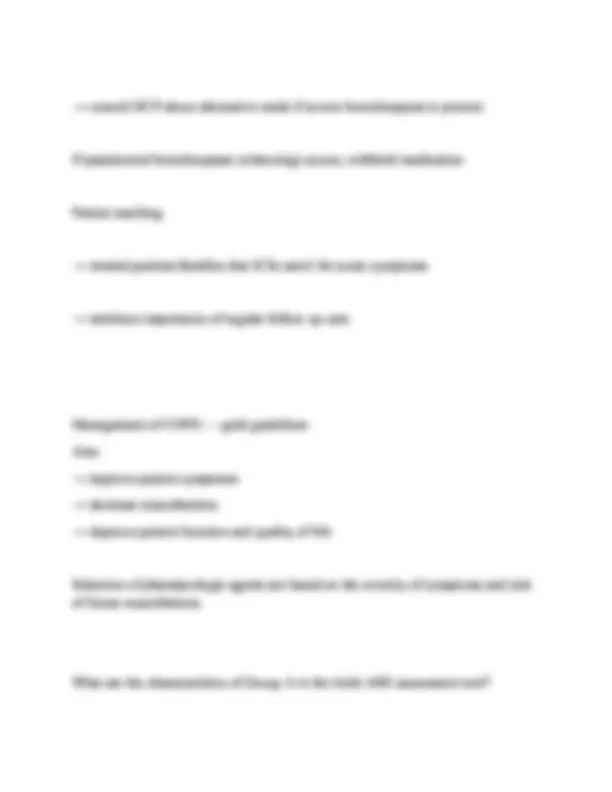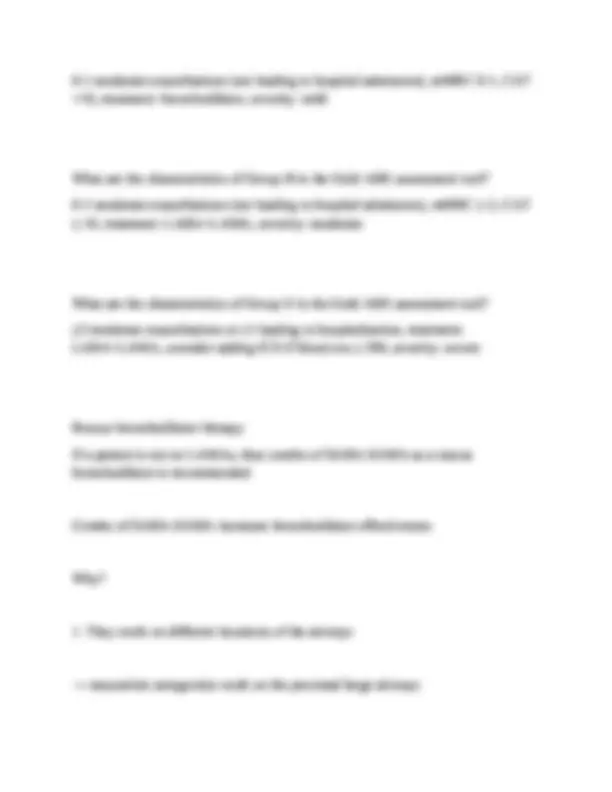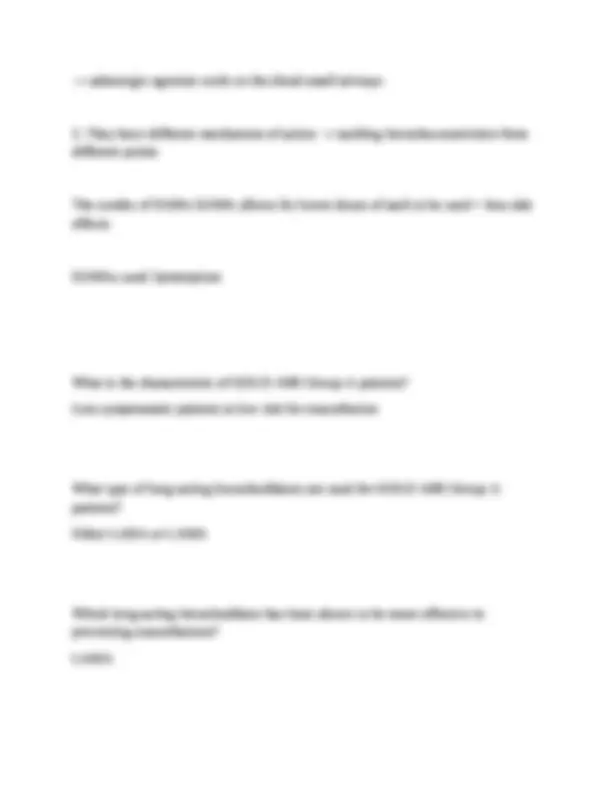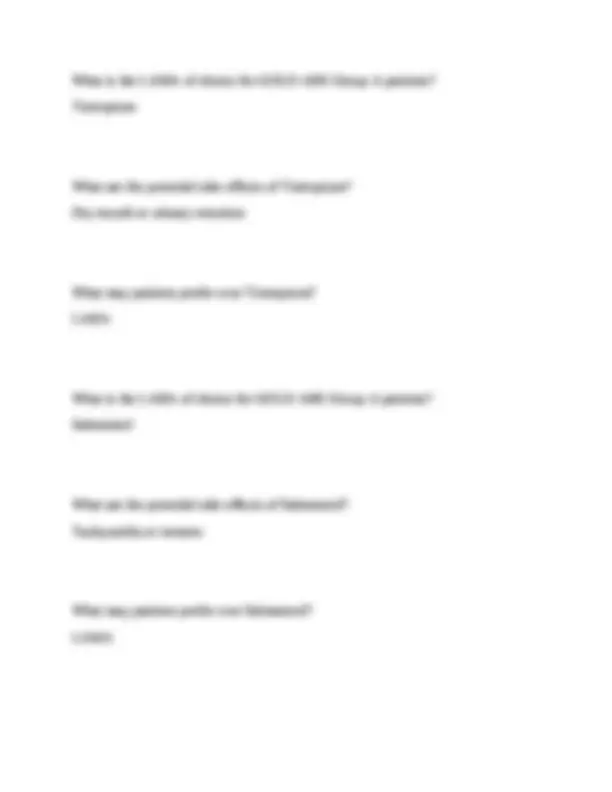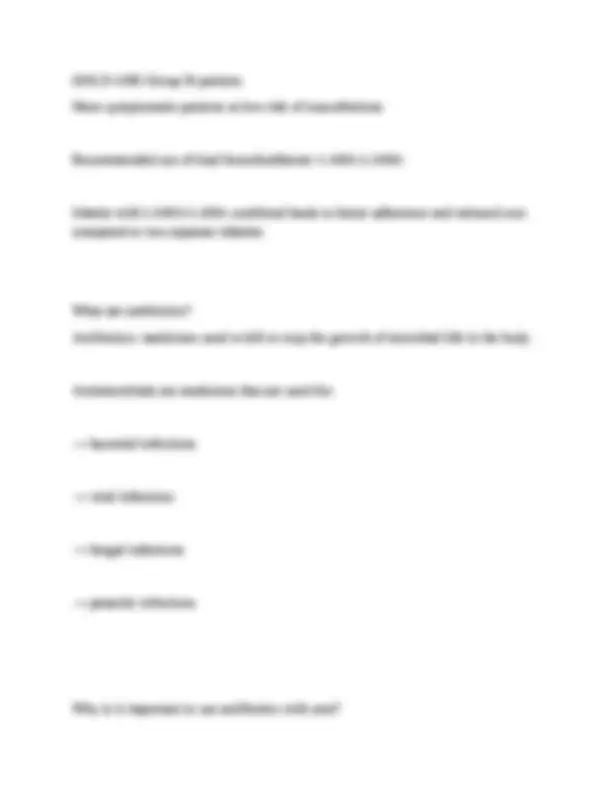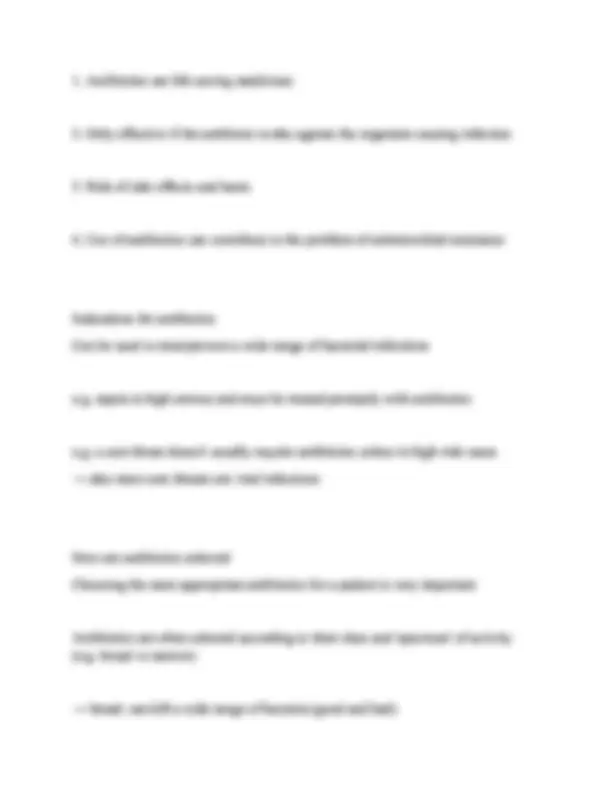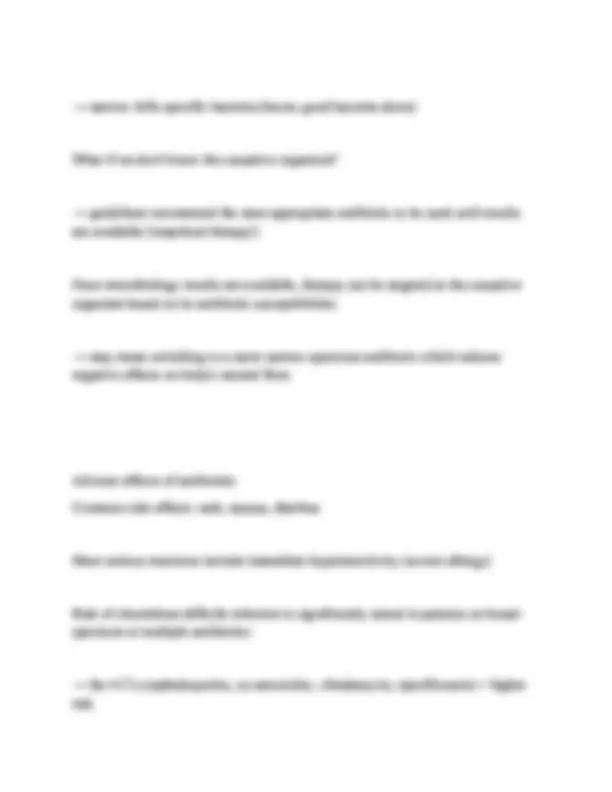Partial preview of the text
Download NURS 310 EXAM QUESTIONS WITH 100% CORRECT ANSWERS 2025-2026. A+ GRADED. and more Exams Nursing in PDF only on Docsity!
A+ GRADED. What is a drug? Any chemical that affects the physiologic processes of a living organism What is acute therapy in drug therapy? It is used to sustain life or treat a disease in critically ill patients, for example, chemotherapy for cancer. What is maintenance therapy in drug therapy? It is used to prevent a disease from progressing in chronic conditions, for example, blood pressure medications for hypertension or insulin for diabetes. What is supplemental therapy in drug therapy? It is used to provide the body with a chemical it can't synthesize itself, for example, giving thyroid hormones (Synthroid) to a patient who can't produce their own. What is palliative therapy in drug therapy? It is used to make a patient with an incurable condition as comfortable as possible, for example, giving opioids to someone experiencing pain from terminal cancer. What is supportive therapy in drug therapy? It is used to provide body support with functions while recovering from illness, for example, providing electrolytes for vomiting. What is prophylactic therapy in drug therapy? It is used to prevent illness or negative outcomes from happening, for example, the COVID vaccine. Pharmacotherapeutics The clinical purpose and indications of administering a drug What is our goal with the drug? Collaborative process between patients, family, healthcare providers, etc. Needs to be measurable and observable through patient monitoring Pharmacokinetics Study of what happens to a drug from the time it's put into the body until it leaves the body Need to think about: — absorption — distribution — metabolism What are the methods of parenteral medical administration? Interdermal: into the skin; Subcutaneous: into the skin, deeper than interdermal; Intravenous: into veins; Intramuscular: into muscle Enteric coating Goal: protect the stomach wall and allow for dissolution and absorption of drugs to take place in intestine If stomach is too acidic, decreased absorption in intestine For drugs that need absorption through stomach: acidic or not = drug dependent Absorption route of drugs administered orally that enter the stomach (e.g. pills, liquids) 1. Drug is absorbed through mucosa of small/large intestine 2. Enters mesenteric blood system 3. Enters portal vein into liver 4. Liver enzymes metabolize drug 5. Active drugs enter general circulation What is the first-pass effect? Drugs metabolized by the liver have a lower bioavailability How does first-pass effect vary based on administration route? Drugs administered via mouth, nasogastric tube, or gastronome experience first- pass effect, while sublingual, parenteral, and topical administration bypass it What is distribution in pharmacology? Process by which a drug absorbed into circulation is transported through the bloodstream to the site of action. How does blood supply affect drug distribution in vital organs? Vital organs with higher blood supply, like the heart, liver, and kidneys, experience quicker drug distribution compared to muscles, skin, and fat. What happens to drugs in the bloodstream in terms of their form? Drugs in the bloodstream can move in free form or bound to proteins. Only unbound drugs are active, while drugs bound to proteins cannot enter tissues. Liver and kidneys What are the possible outcomes of drug metabolism? Inactive metabolite, more soluble compound, more potent metabolite, less active metabolite What factors can influence drug metabolism? Liver function, kidney function, age, genetics, diseases, concurrent administration of other medications Excretion Process by which a drug (active and inactive) is eventually removed from the body by the kidneys (most common) and the liver — exhalation — sweating — urination — defecation Pharmacodynamics Relationship between drug concentration and the action of the drug-mechanism of action i.e. what the drug does to the body Goal: a positive change in a lack of appropriate physiological function Activity: increase/decrease rate of function, or modify strength of function — no new function! Pathways: receptor interactions, enzyme interactions, nonselective interactions Agonist drugs Drug binds to a receptor on the cell causing cell/tissue to increase in activity — e.g. opioids bind to opioid receptors, causing full opioid effects Agonist-antagonist drugs Drug binds to a receptor on the cell causing cell/tissue to increase its activity, but not to the same degree as an agonist as it has both antagonist and agonist effects — e.g. Buprenorphine are agonist at the U-receptors (opioid effect) and antagonists at K-receptors (decrease opioid effect) — variable absorption — inactivation of some drugs by stomach acid Nursing considerations: — involves a variety of dosage forms (liquids, tablets, etc.) — some need to be taken with food, others not — what other meds is the patient taking? Sublingual Advantages: — absorbed more rapidly than oral — more rapid onset of action — no breakdown of drug by stomach acid — no first-pass effect Disadvantages: — patient may accidentally swallow pill (needs to dissolve under tongue) — need salivary secretions Nursing considerations: — sublingual: needs to be placed under tongue — buccal: needs to be placed between cheek and gum What are the advantages of IV administration? Rapid onset, direct control of drug level in blood, allows for larger fluid volume, avoids first-pass effect What are the disadvantages of IV administration? Higher cost, inconvenience, fluid overload, risk of infection, possibility of air emboli, difficulty to reverse drug effect What are the nursing considerations for IV administration? Landmarking site of administration Topical route advantages Rapid absorption, good alternative to oral route, good for local and systemic drug delivery Topical route disadvantages Discomfort, embarrassment to patient, higher cost than oral Topical route nursing considerations Absorption erratic and unpredictable, safe alternative when nausea and vomiting Topical route nursing considerations For best absorption, need clean skin Transdermal route advantages Provides constant rate of drug absorption, one patch can last 1-7 days Transdermal route disadvantages Rate of absorption affected by excessive perspiration and body temperature, may cause skin irritation Transdermal route nursing considerations Need to place patch on alternating sites, need clean and non-hairy site, ensure previous patch has been removed Inhalation route advantages Rapid absorption, drug delivered directly to lung tissues Inhalation route disadvantages Rapid rate of absorption, need lots of patient education for self-administration Inhalation route nursing considerations Patient education is key Factors that impact absorption in enteral routes of administration Stomach acidity, stomach motility, changes in intestinal mucosa, blood flow to stomach/intestine, food and liquid What does ‘onset of action’ refer to in pharmacology? Time required for the drug to elicit a therapeutic response What is meant by 'peak-effect' of a drug? Time required for the drug to reach its maximal therapeutic response Define ‘duration of action' of a drug. Length of time that the concentration of drug is sufficient enough to elicit a therapeutic response without more doses Receptor A reactive site on the surface or inside of a cell — molecular structure of the drug is important What are enzymes? Substances in our cells that activate almost all chemical reactions in our cells What is the more common way to affect enzyme activity? Inhibition of enzyme activity What is the less common way to affect enzyme activity? Enhancement of enzyme activity Nonselective interactions No interactions with receptors or enzymes Act on cell membranes or cellular processes Monitoring What are patient responses to this drug? — what are the drug's intended therapeutic actions? — what are the drug's unintended adverse effects? Tolerance A decreasing response to repeated drug doses What is dependence? What are antagonistic effects in drug interactions? Combination of two drugs results in effects that are less than the sum of the effects for each drug given separately. What is incompatibility in drug interactions? When two parenteral drugs are mixed together, leading to a chemical deterioration of one or both drugs. What is an Adverse Drug Event (ADE)? Any undesirable occurrence involving medications What are the external factors that can contribute to an Adverse Drug Event (ADE)? Errors by providers or malfunctioning of equipment What are the internal factors that can contribute to an Adverse Drug Event (ADE)? Medication not taken as prescribed What is a Medication Error? A preventable situation where there is a compromise in the 10 rights of medication use What are the 10 rights of medication use in the context of Medication Errors? Right patient, right drug, right time, right route, right dose, right documentation, right reason, right patient education, right to refuse, right assessment/evaluation What is an Adverse Drug Reaction (ADR)? Any reaction to a drug that is unexpected and undesirable and occurs at therapeutic dosages What are PRN medications "As needed" medications — based on the immediate needs of the patients — used to relieve symptoms, not treat an underlying disease — the responsibility of the nurse to prescribe What is pain 
